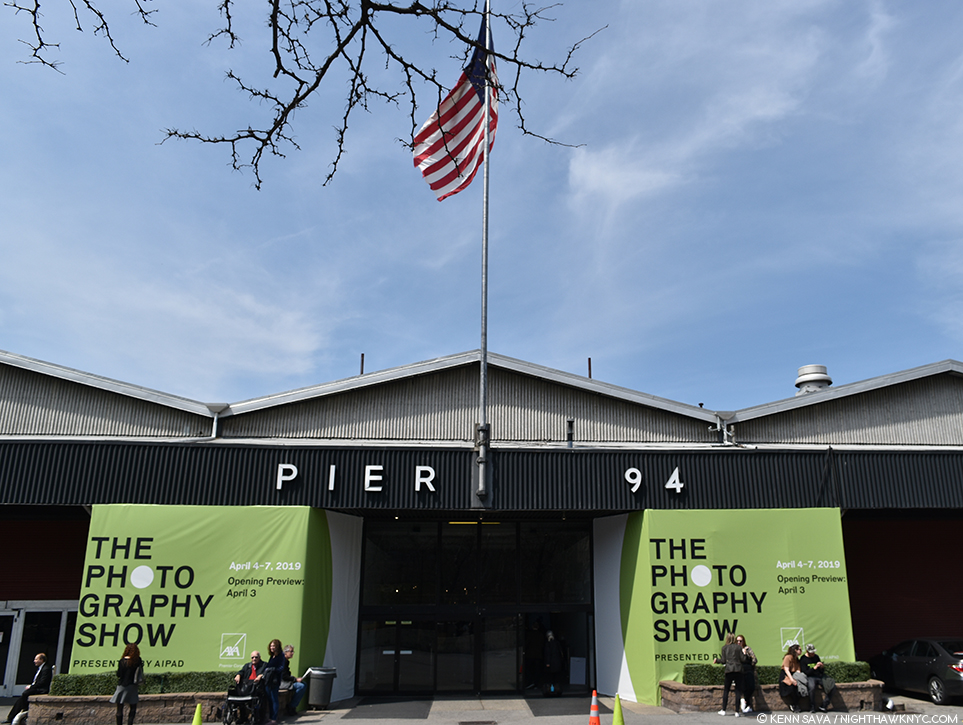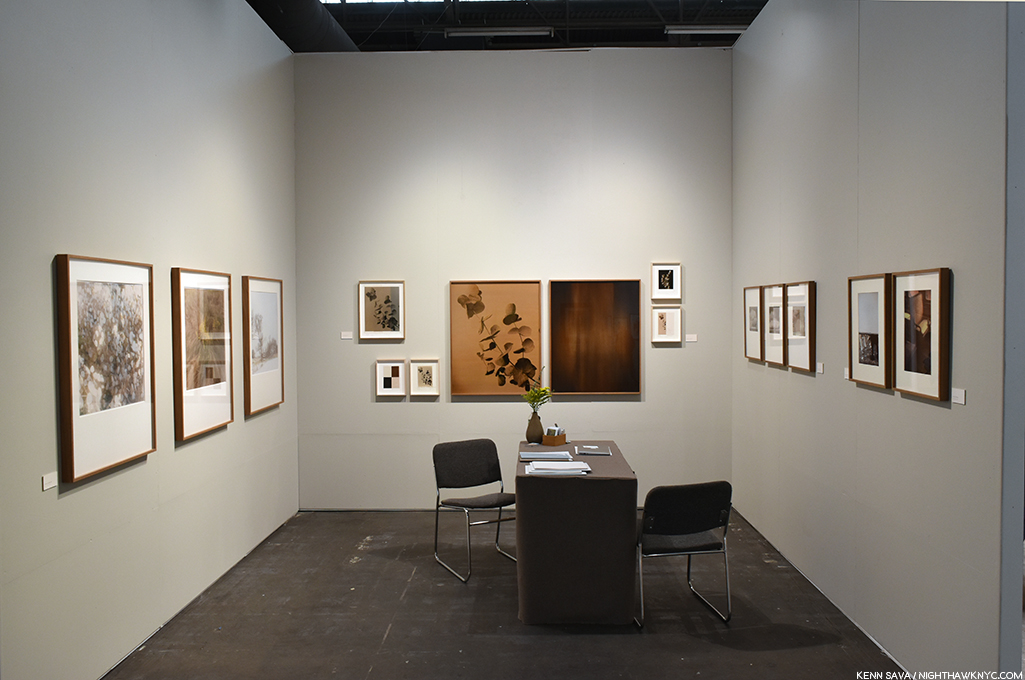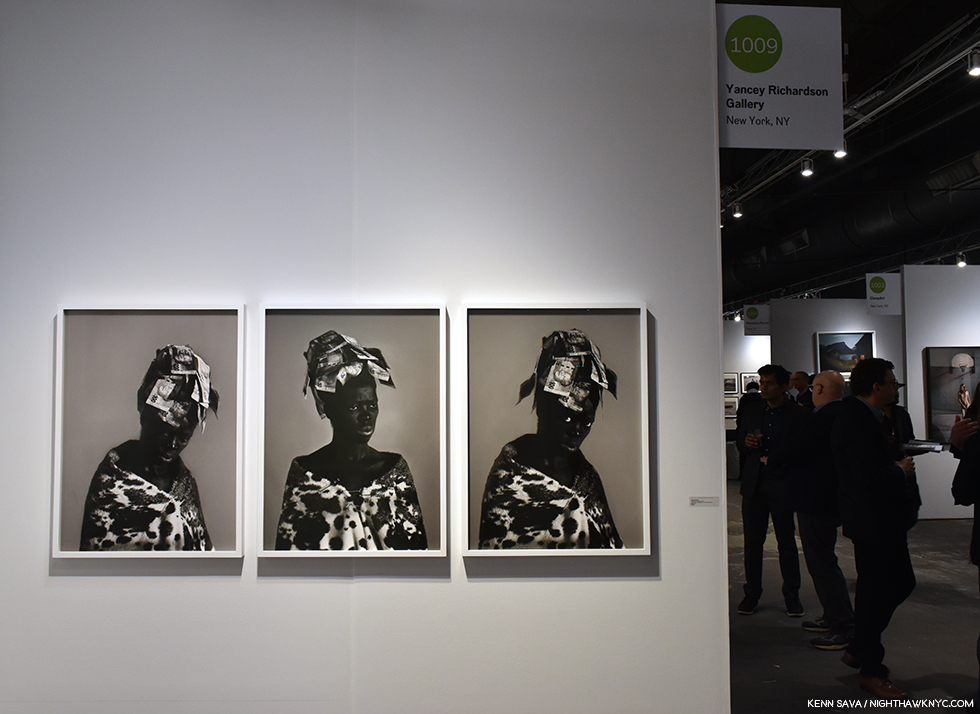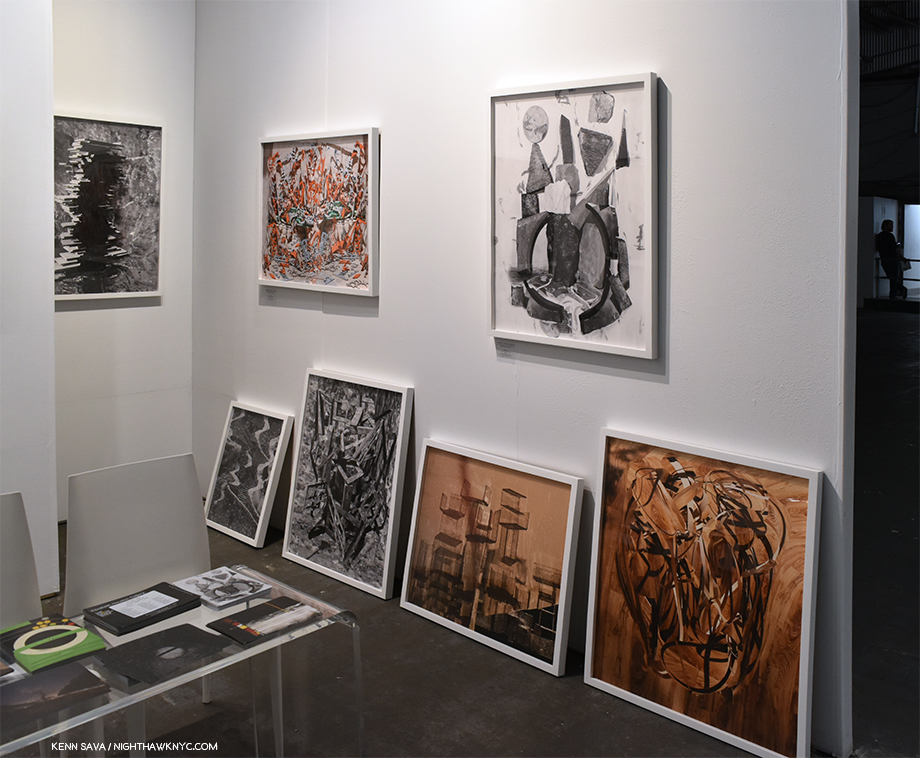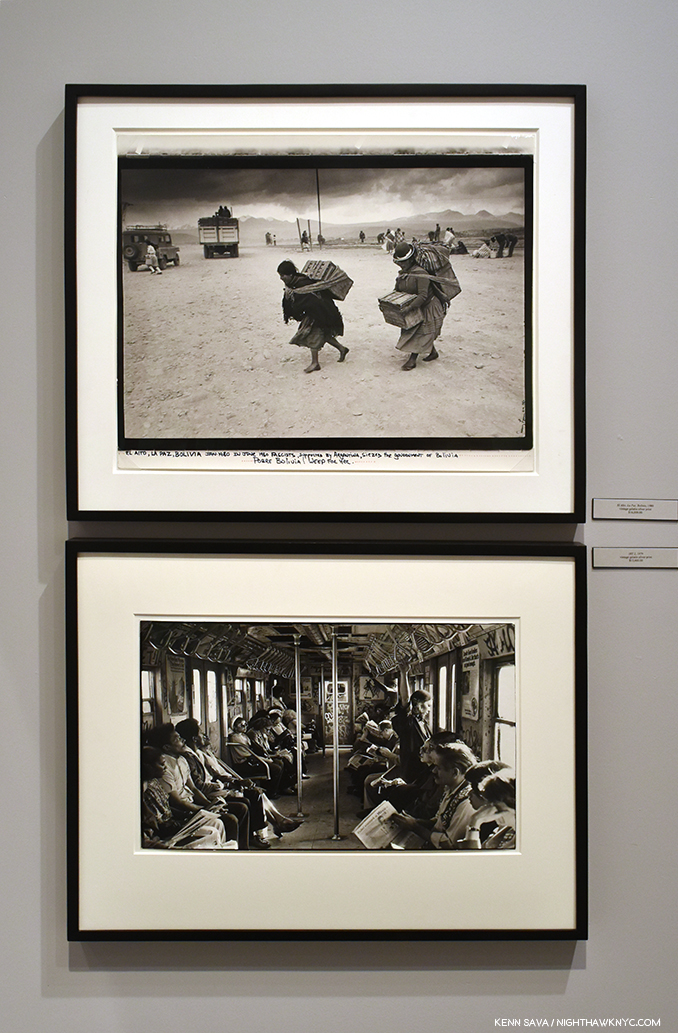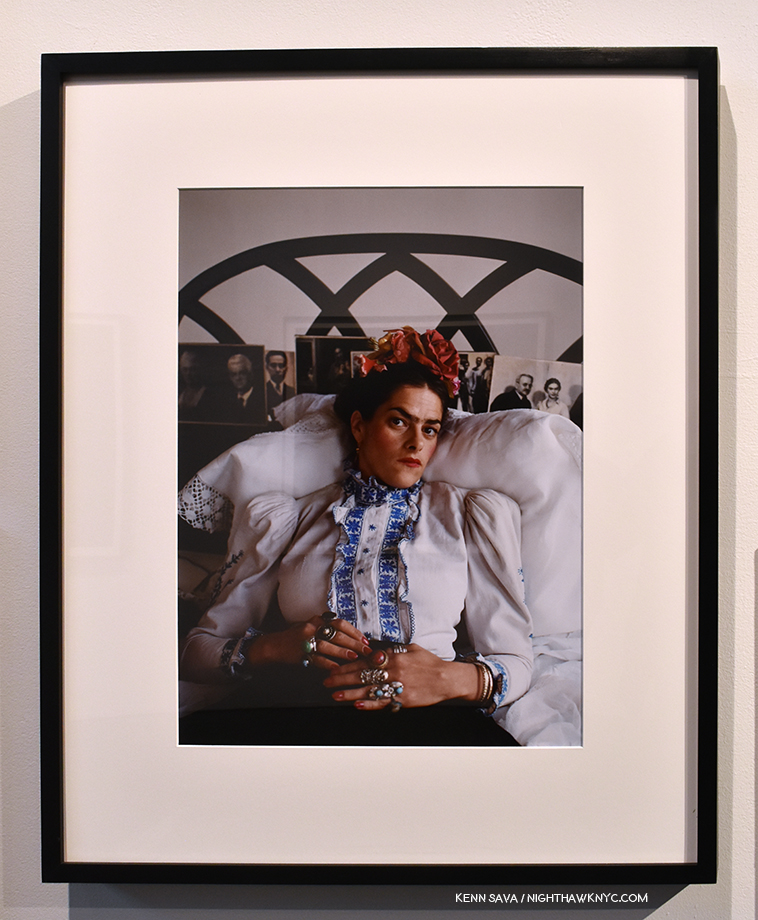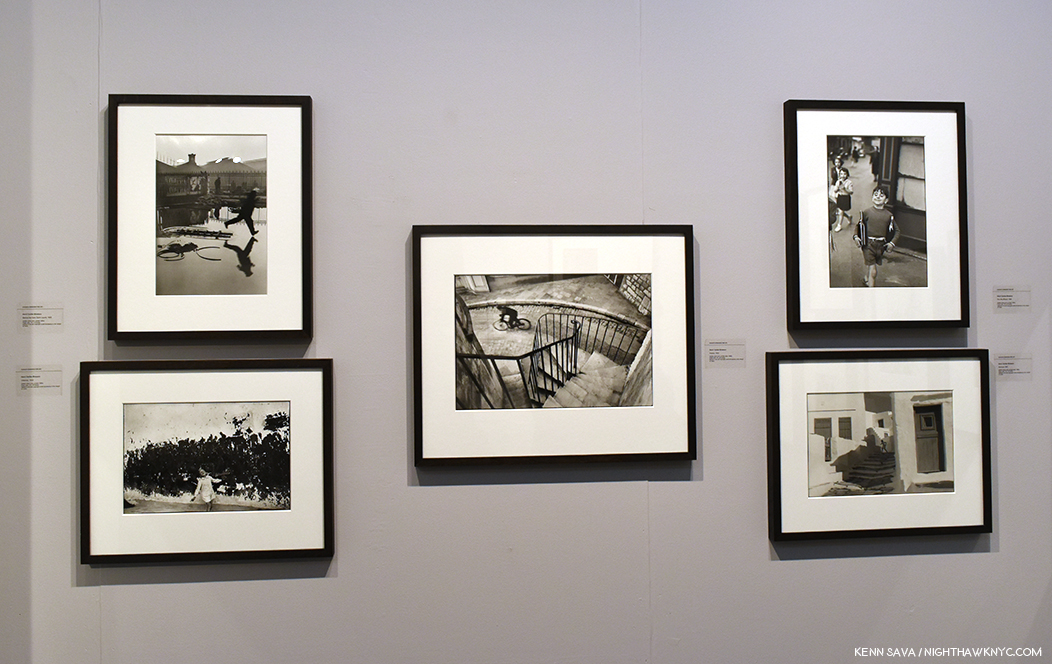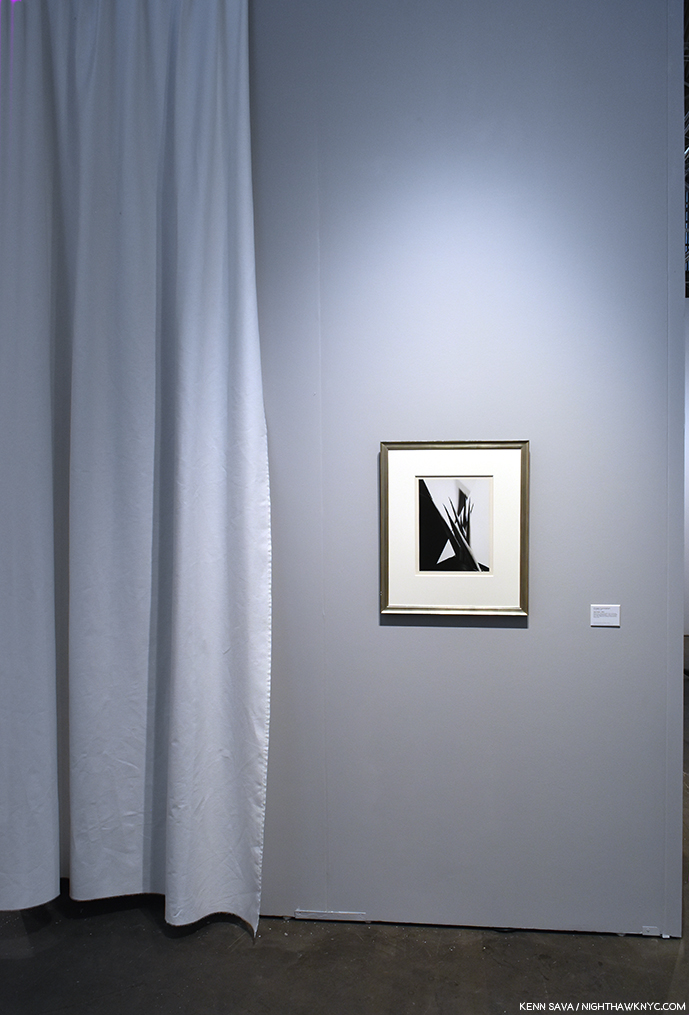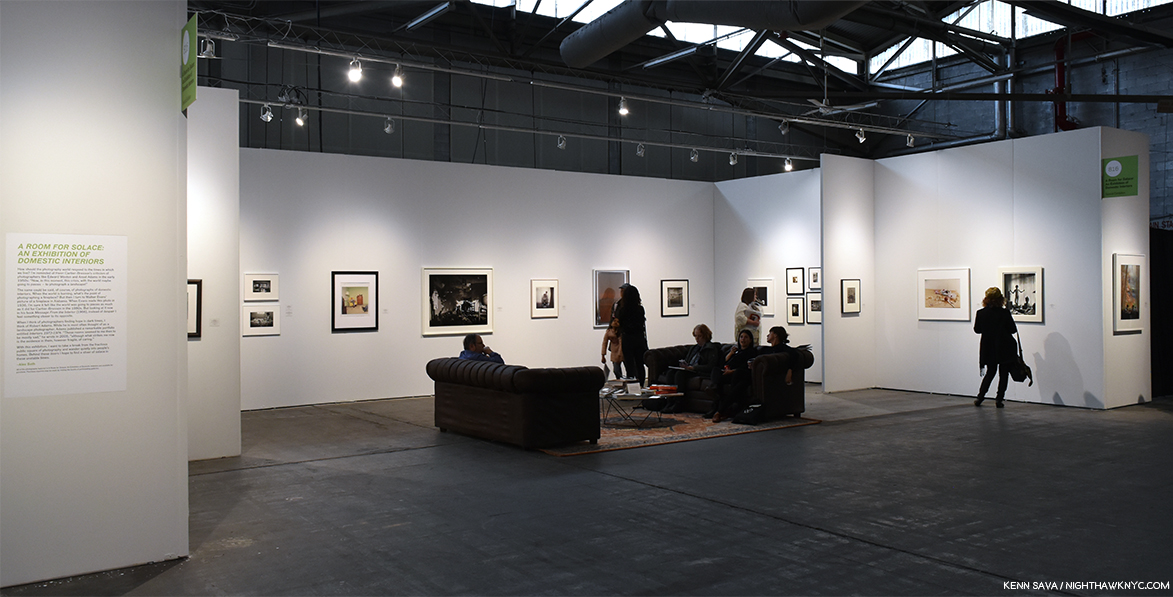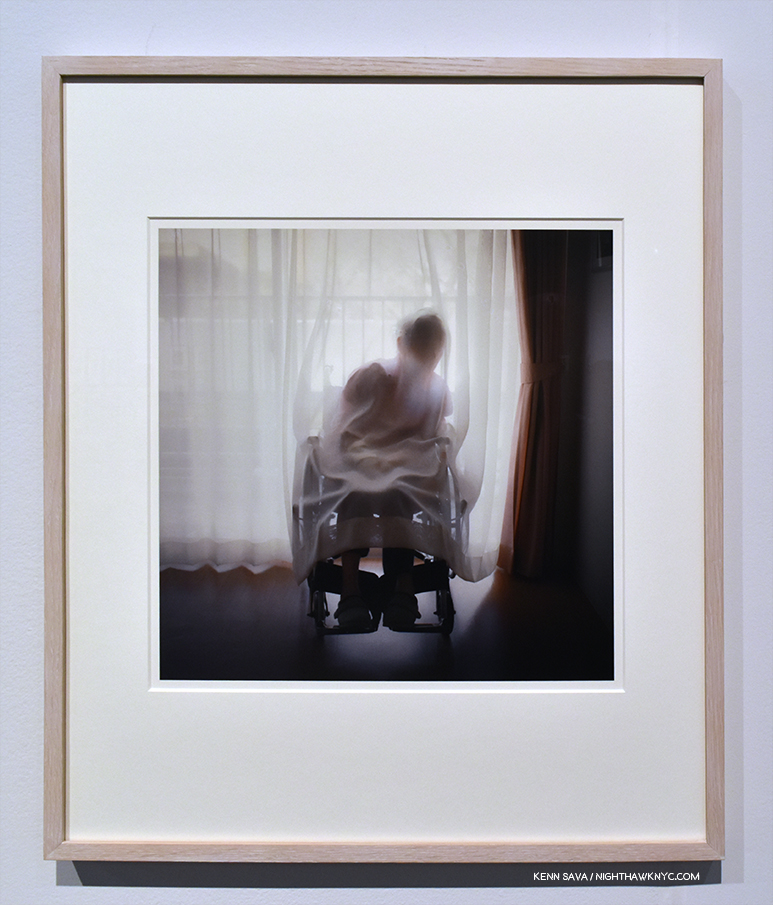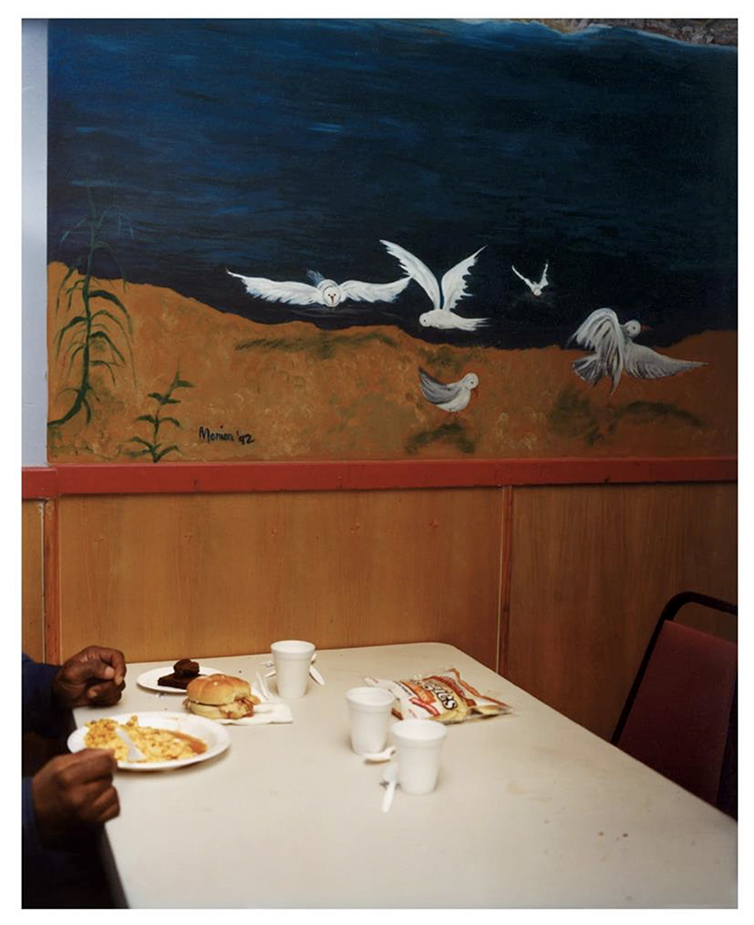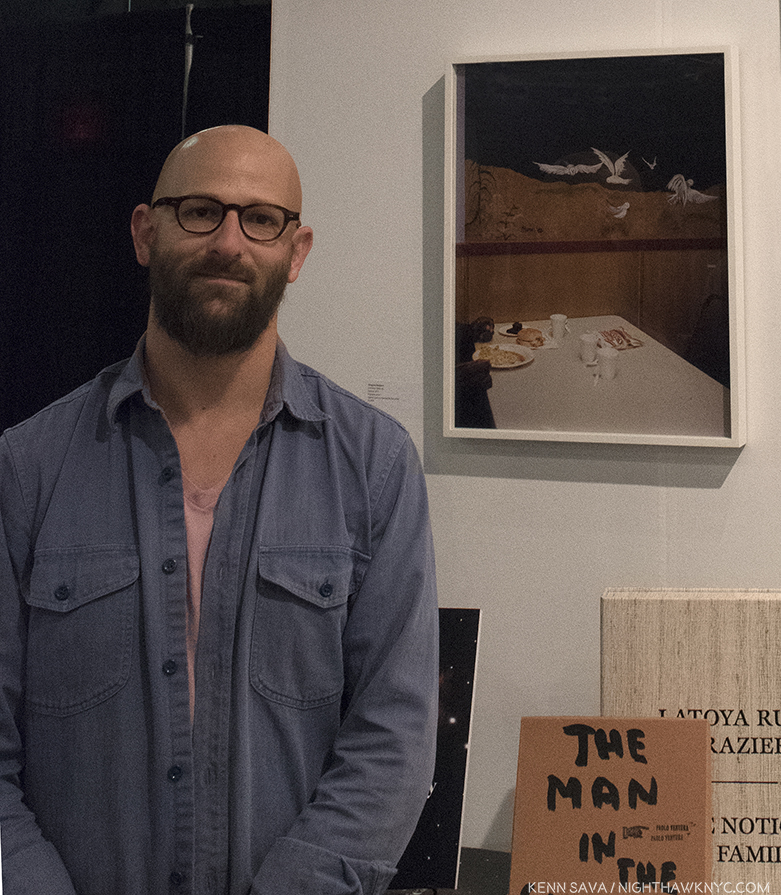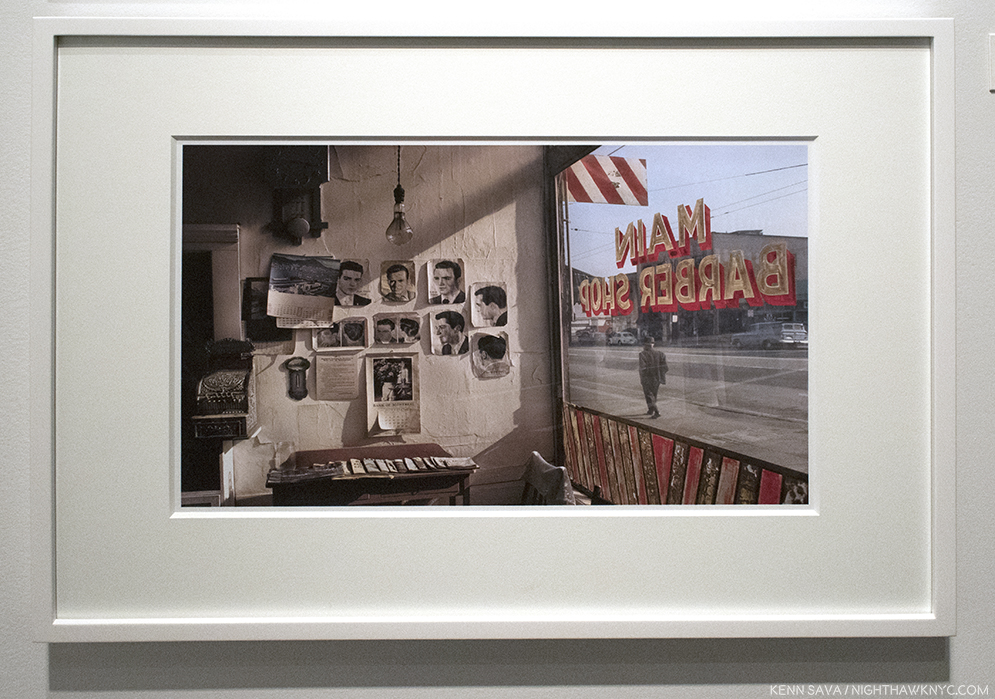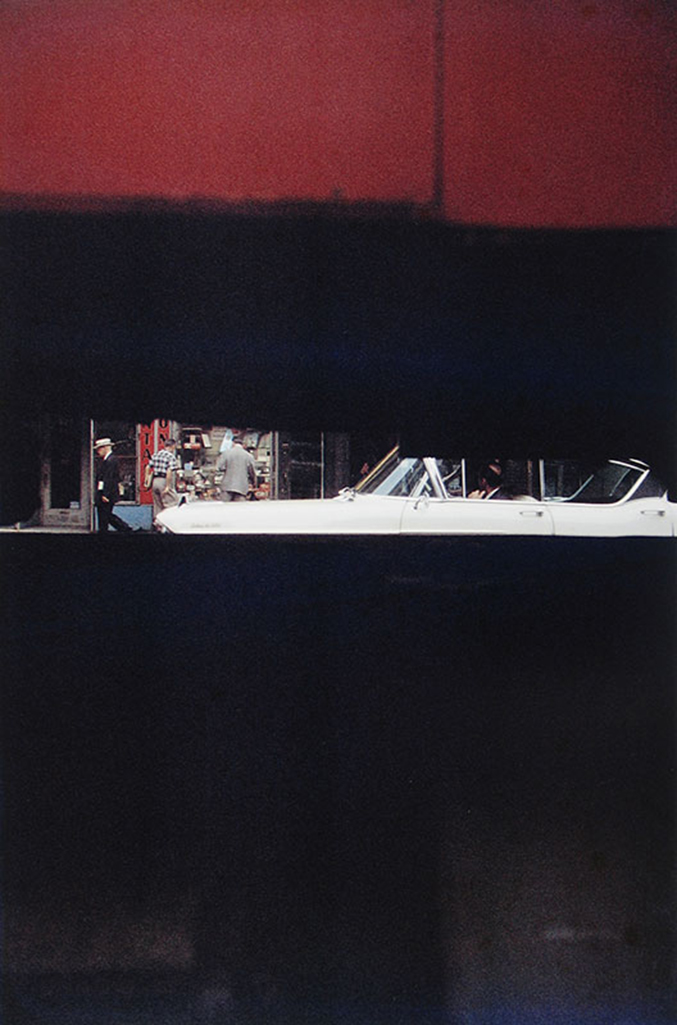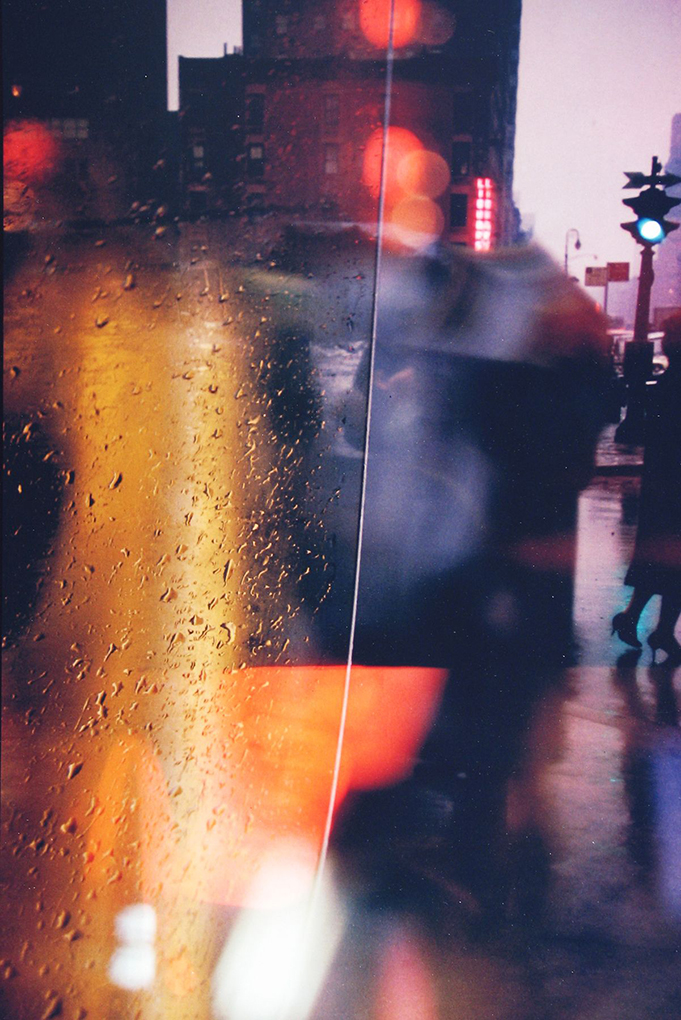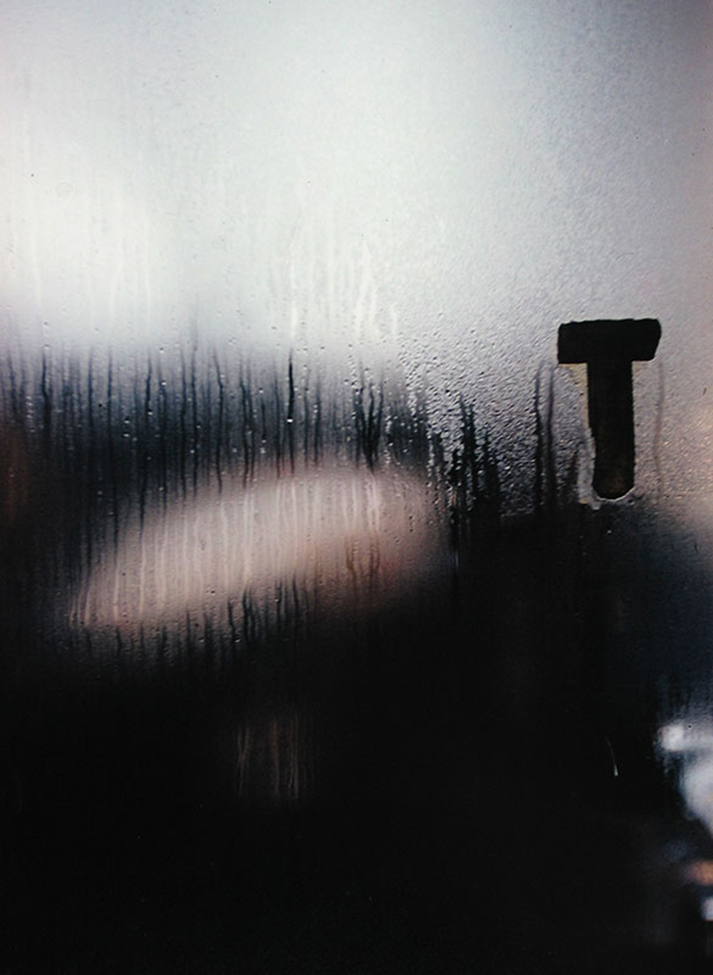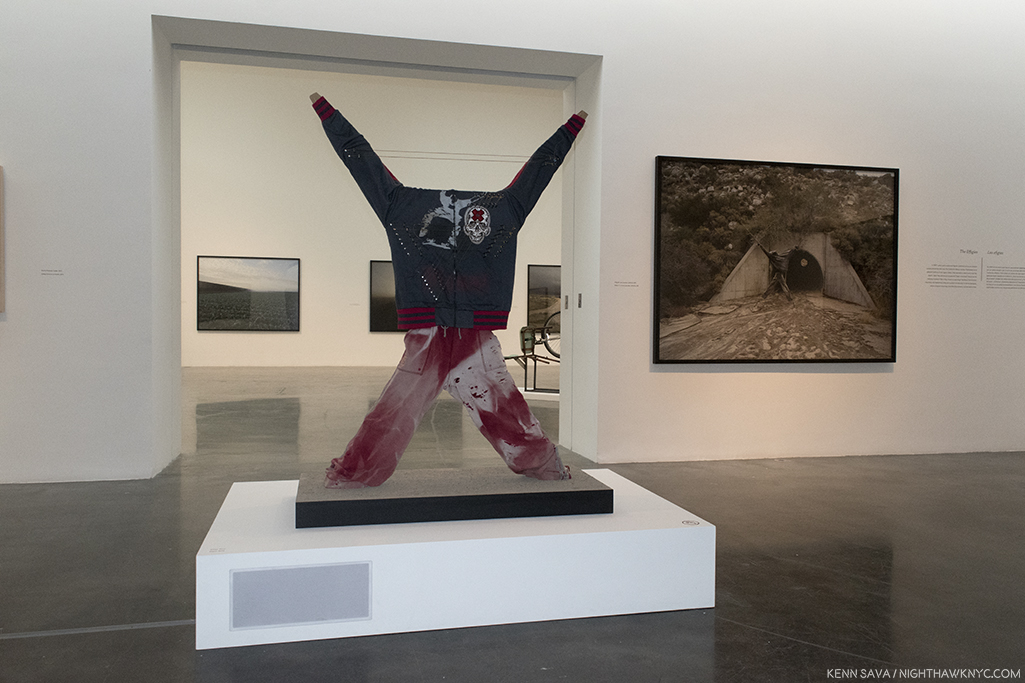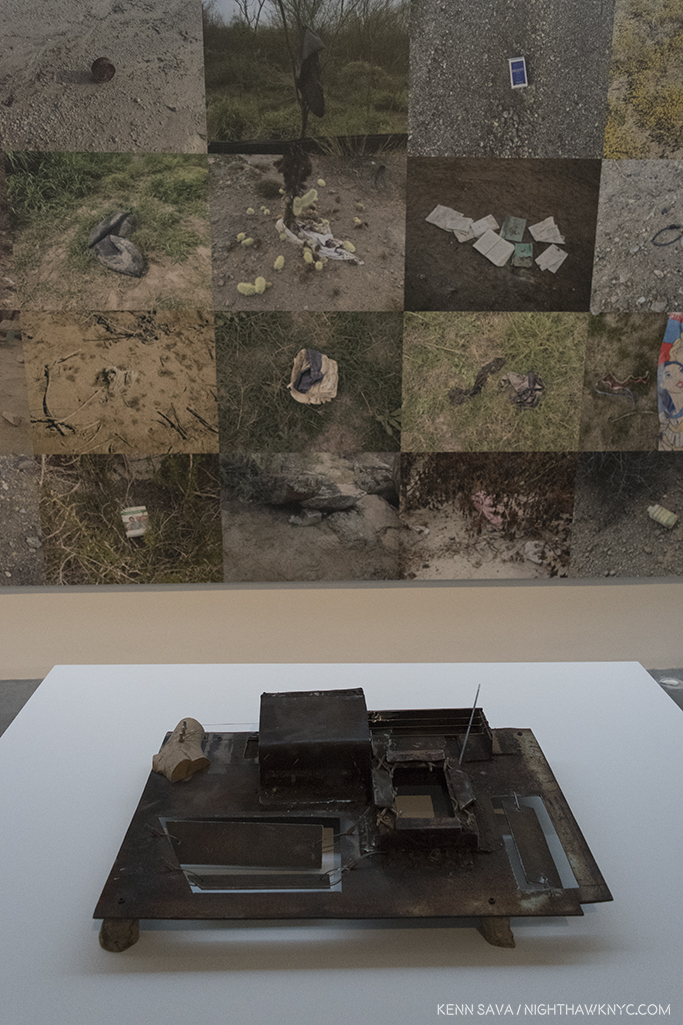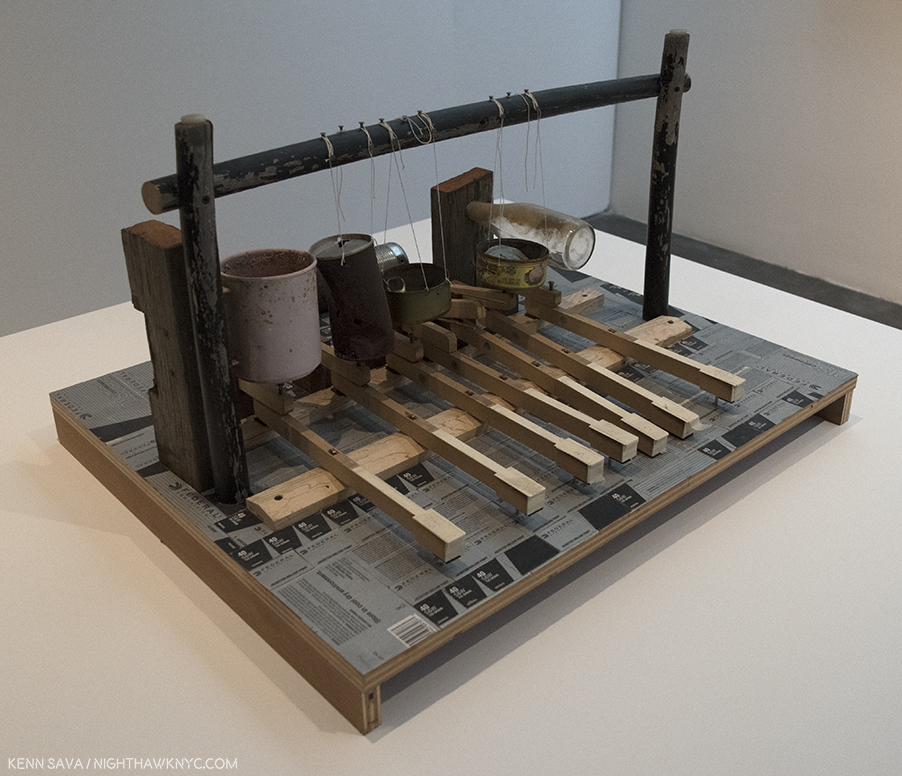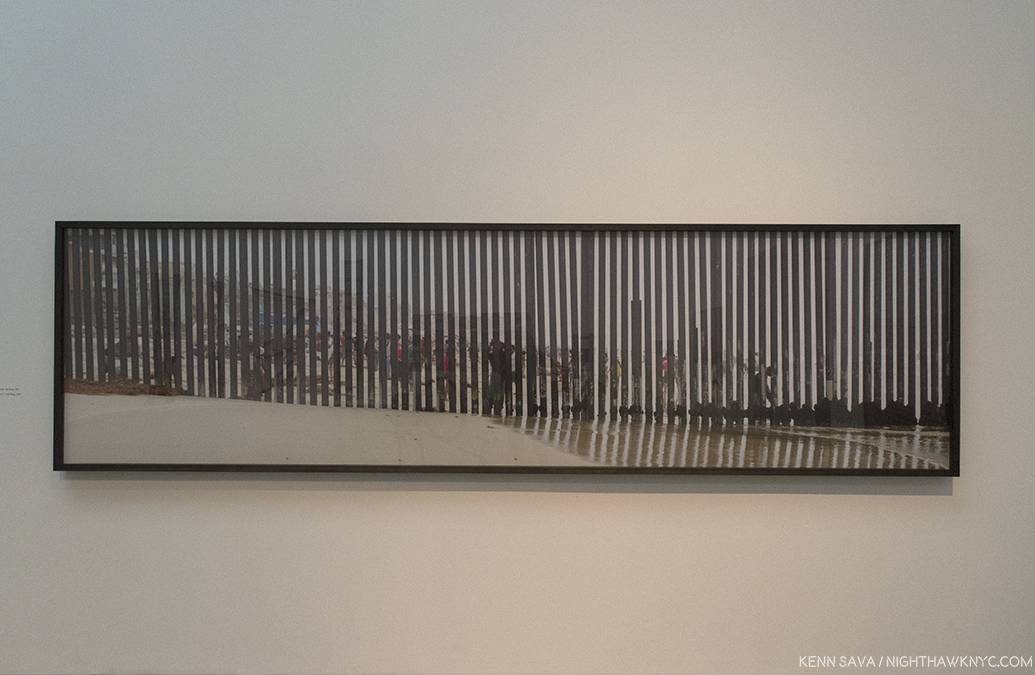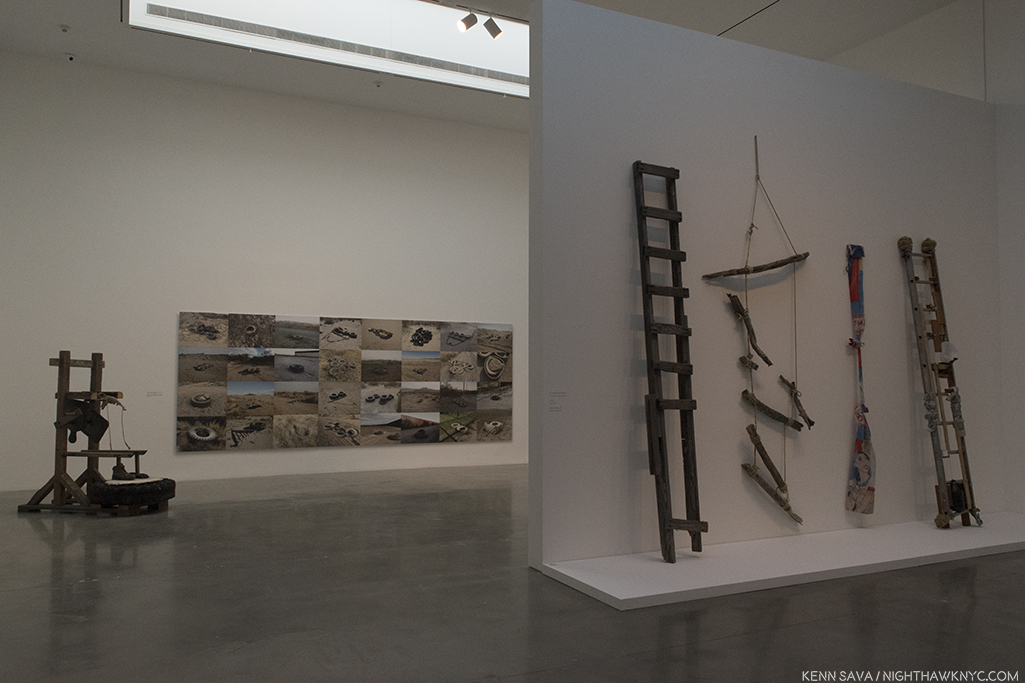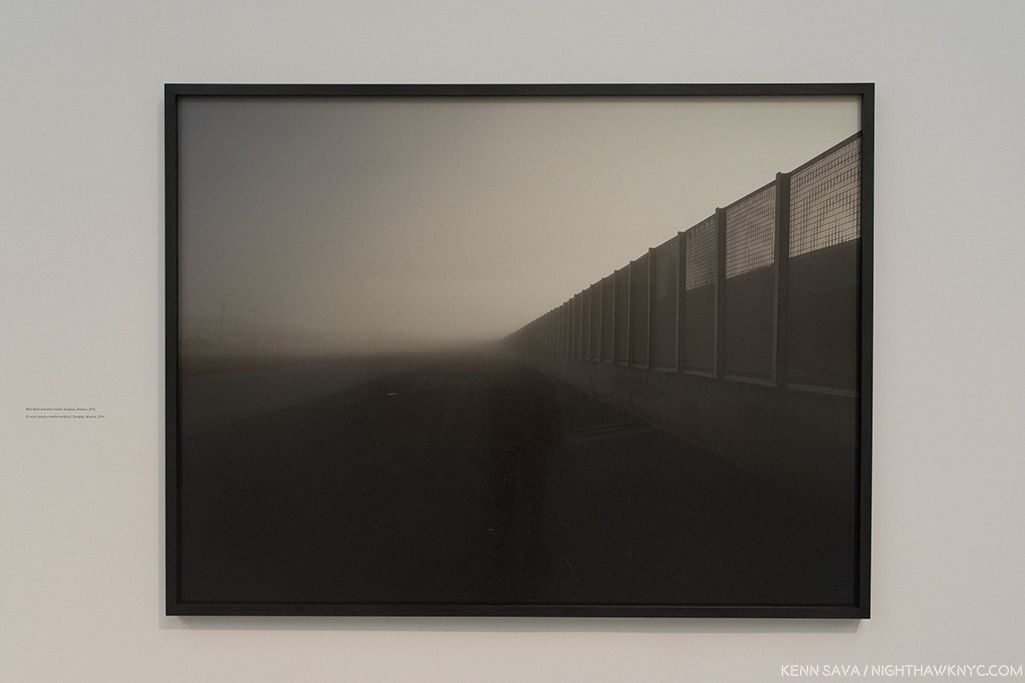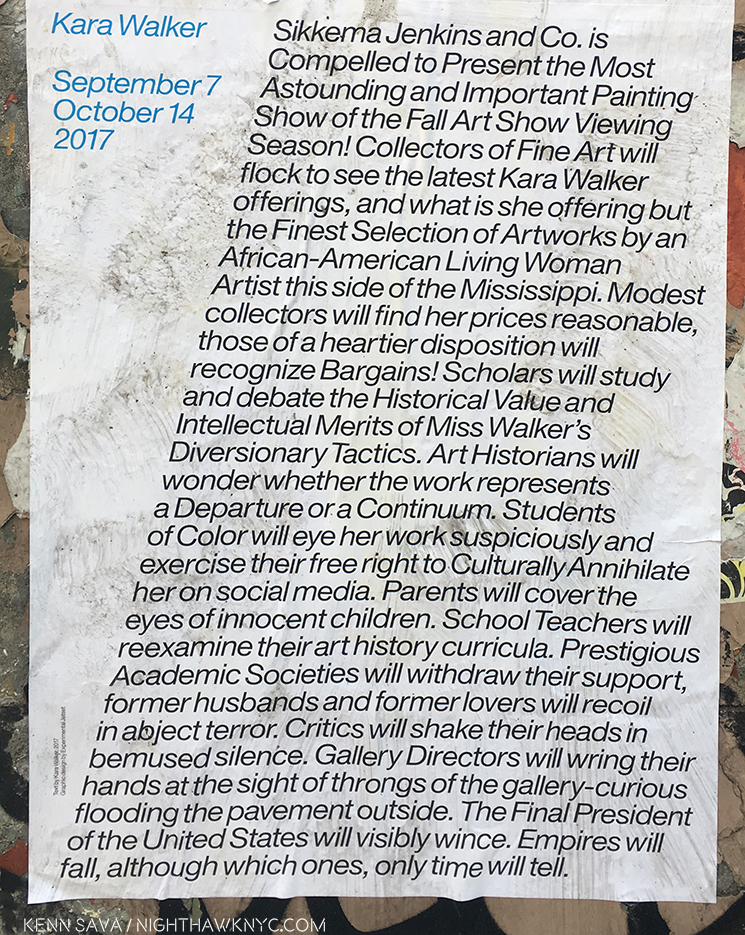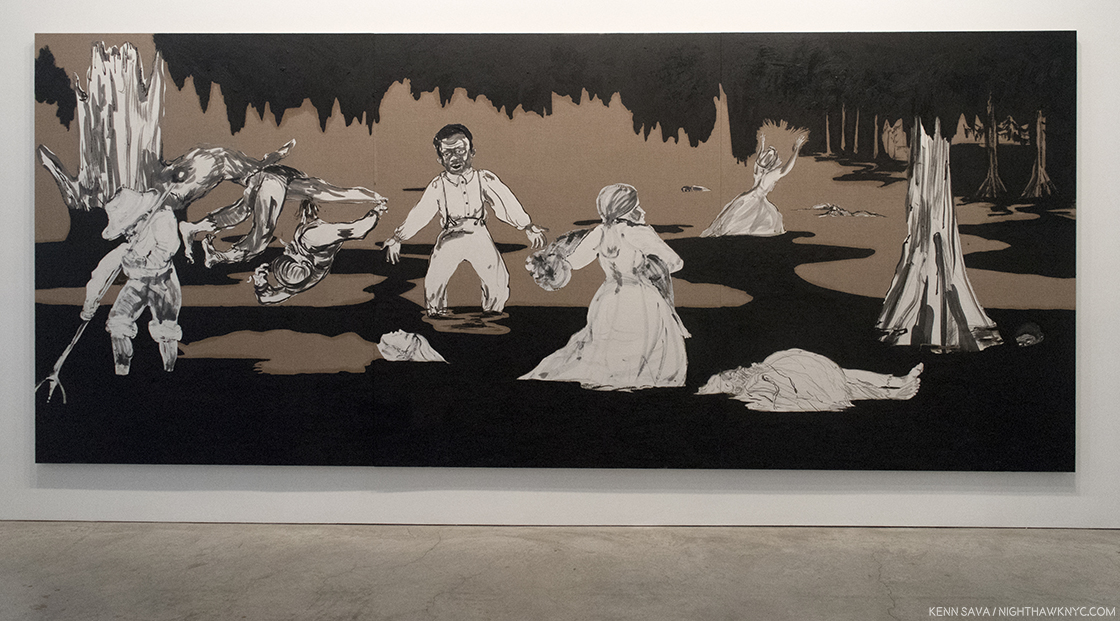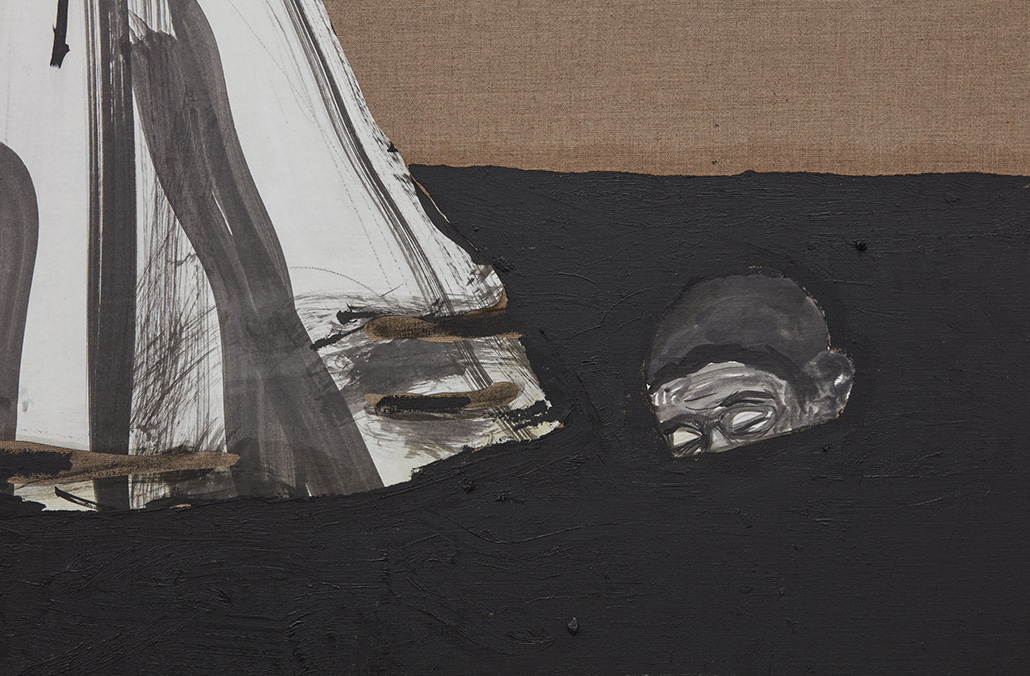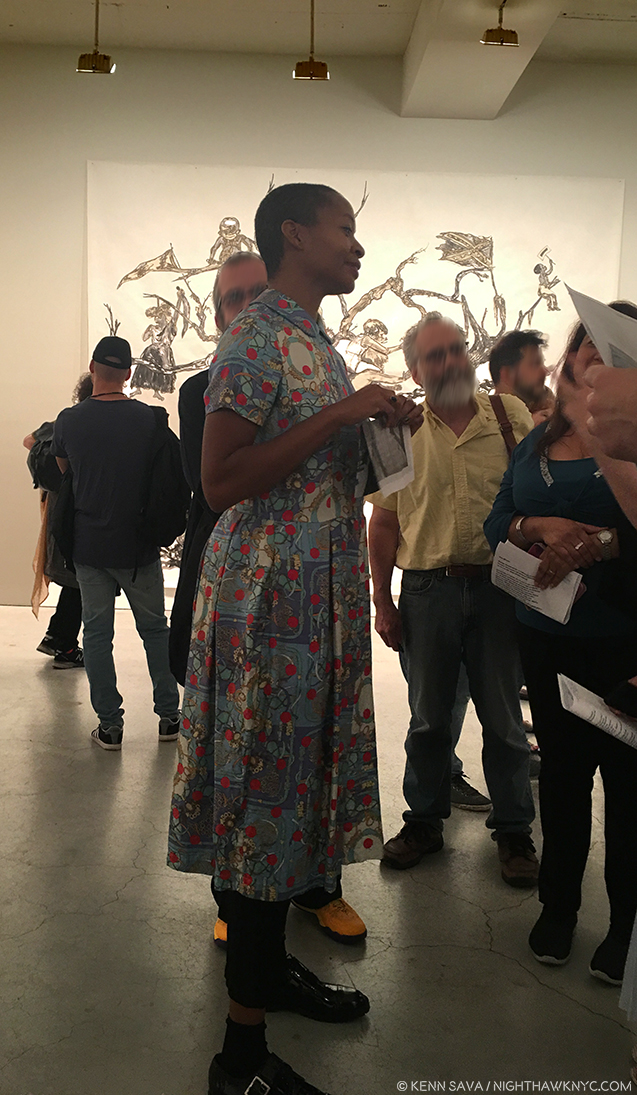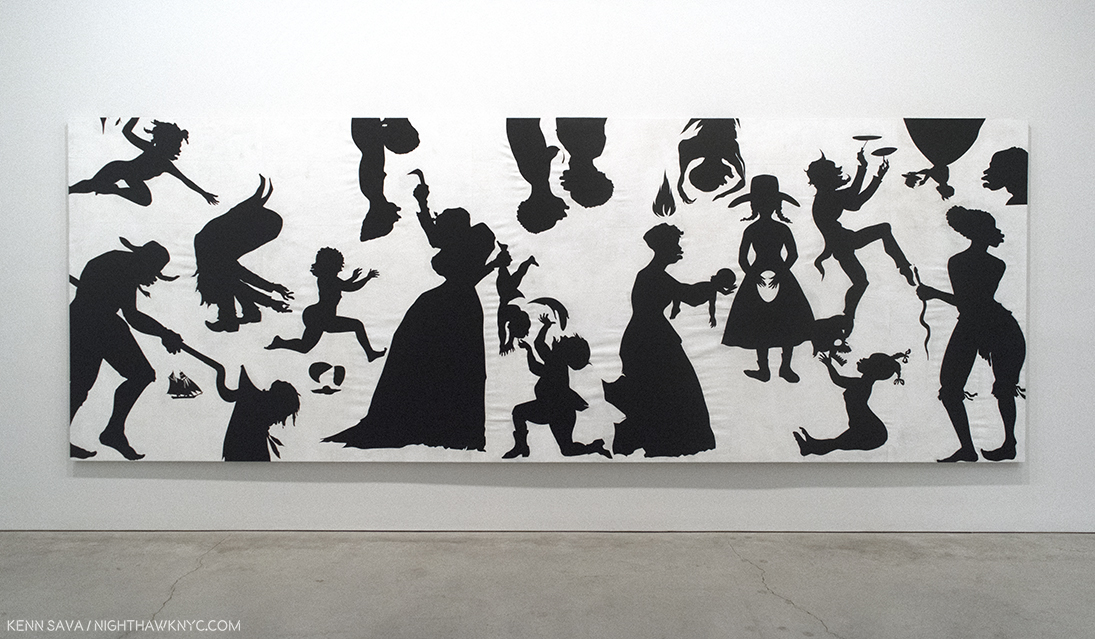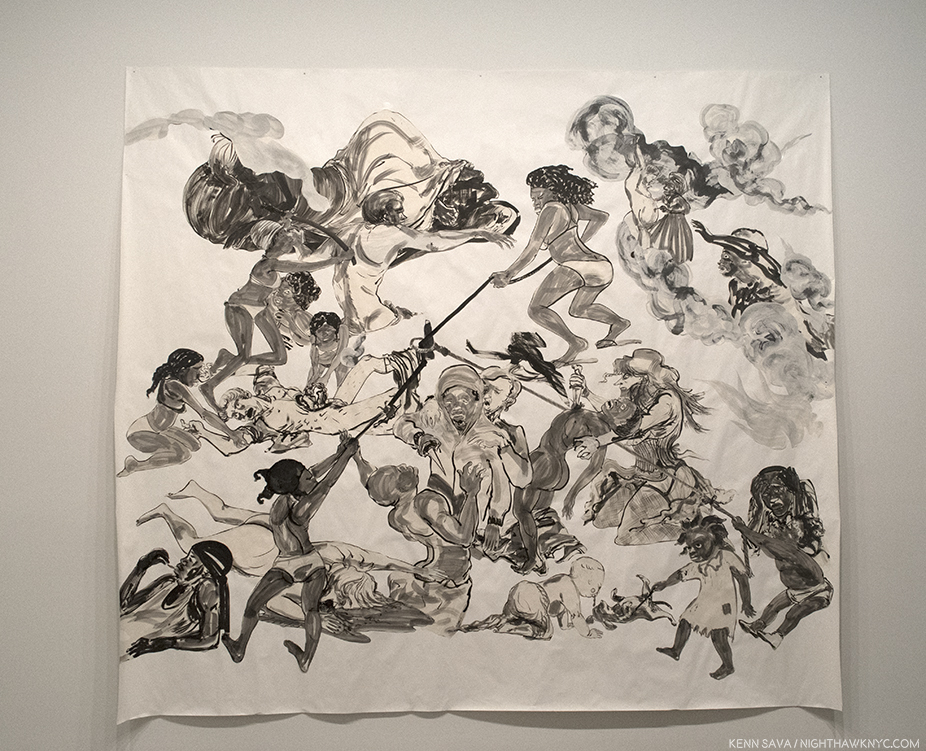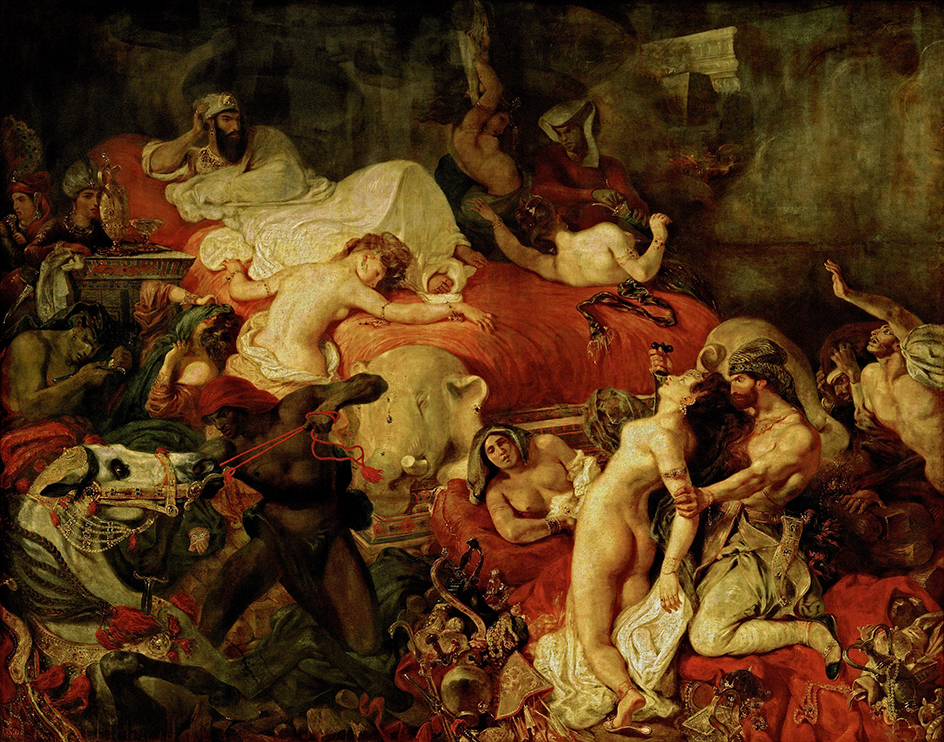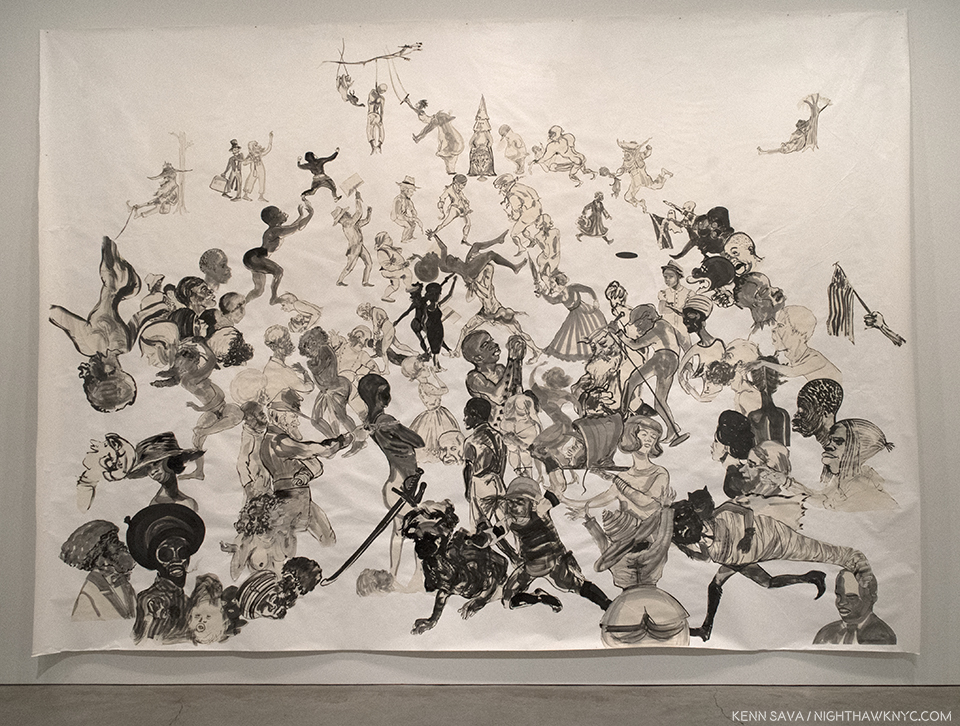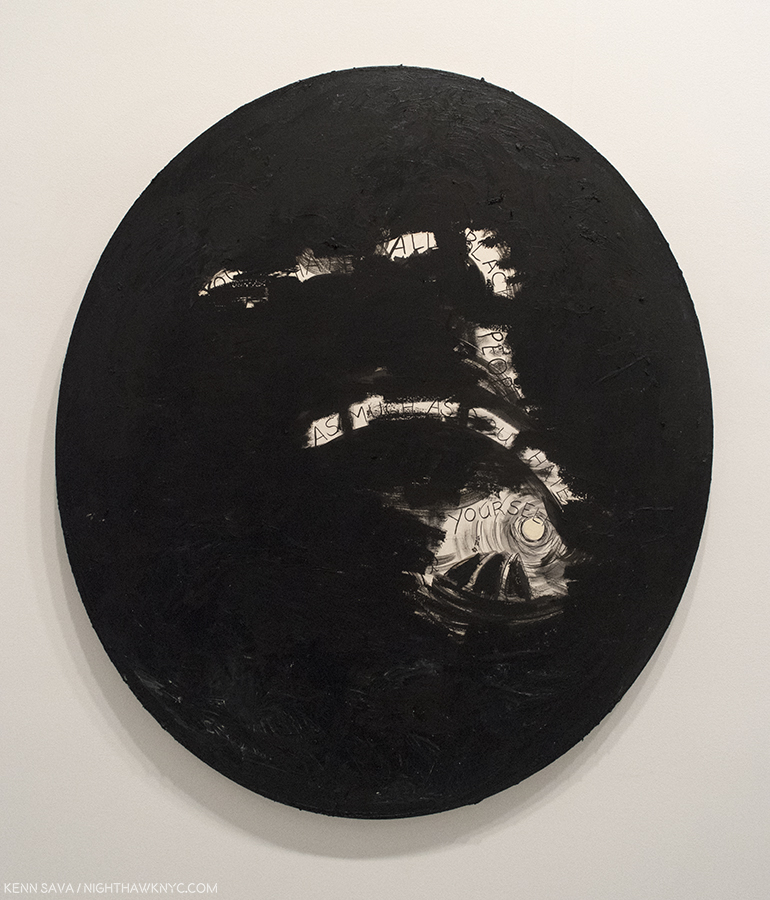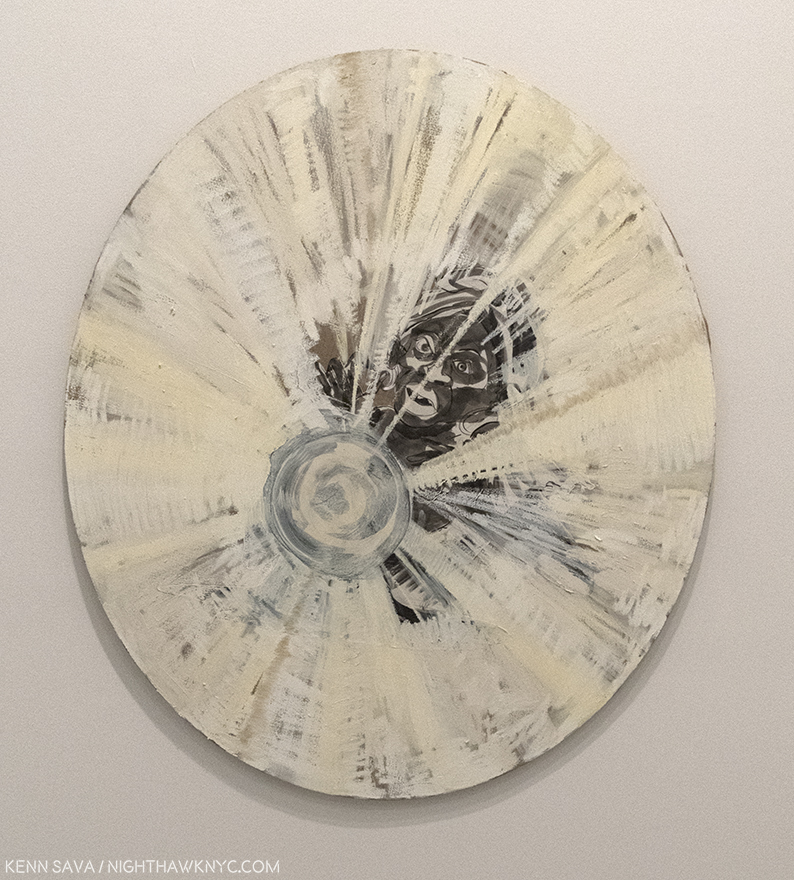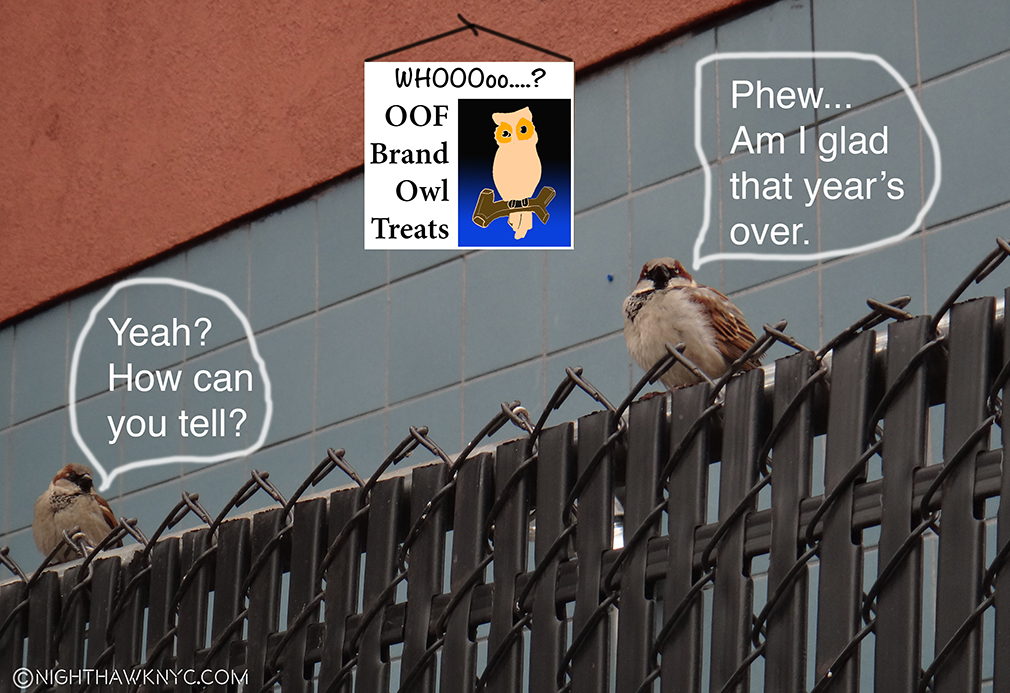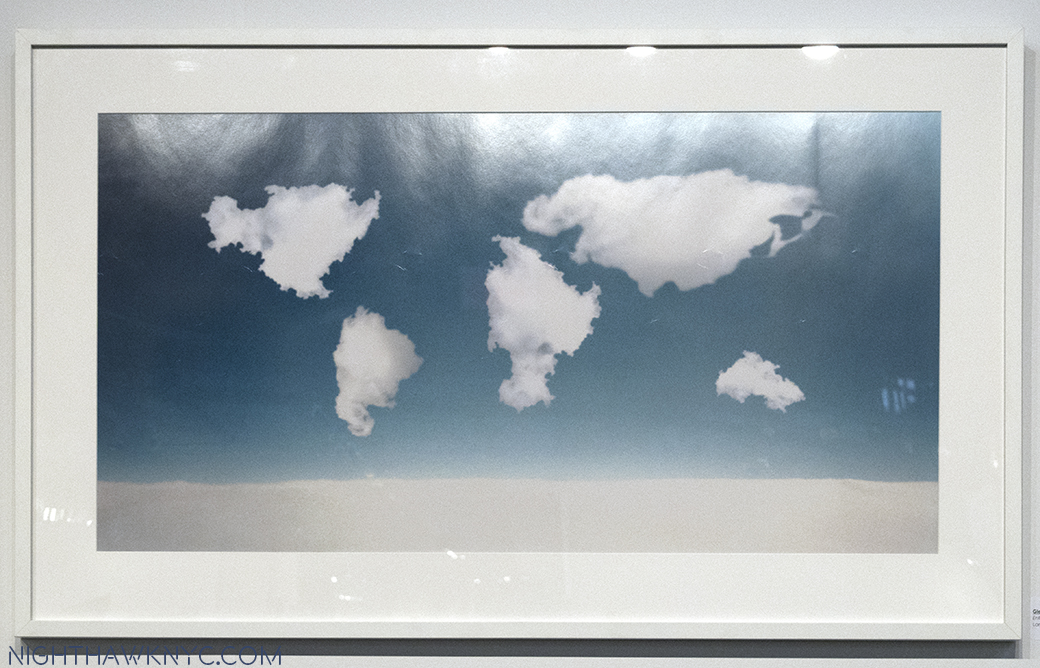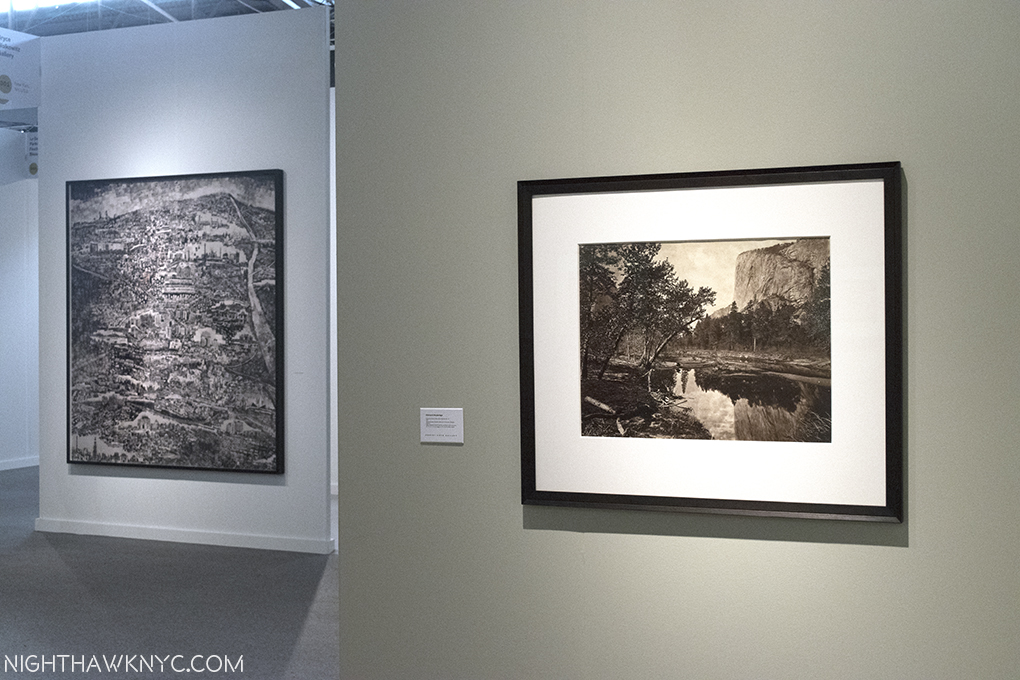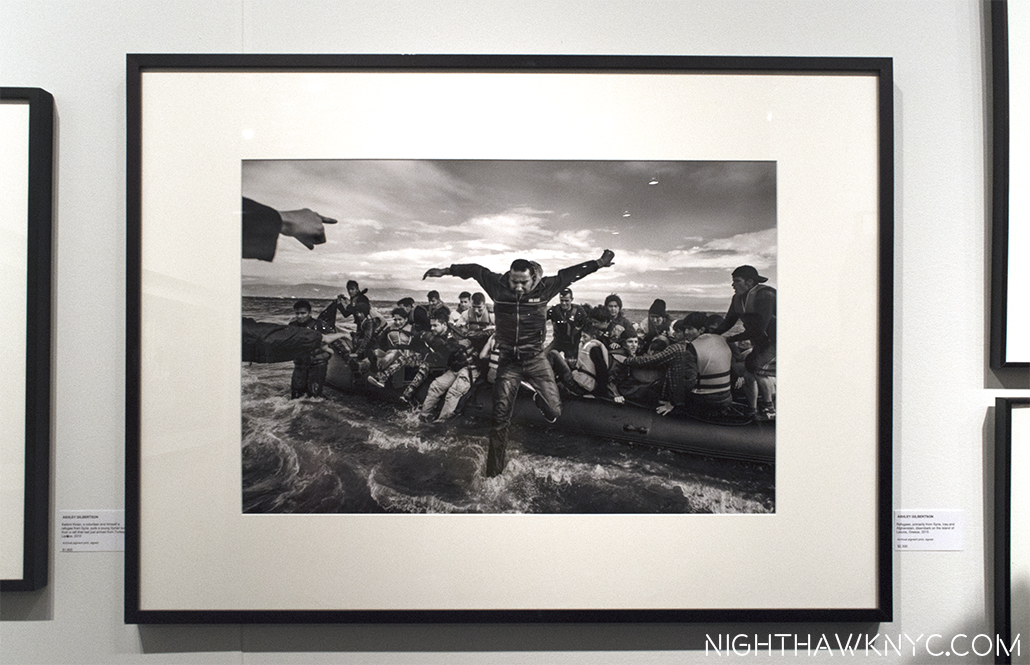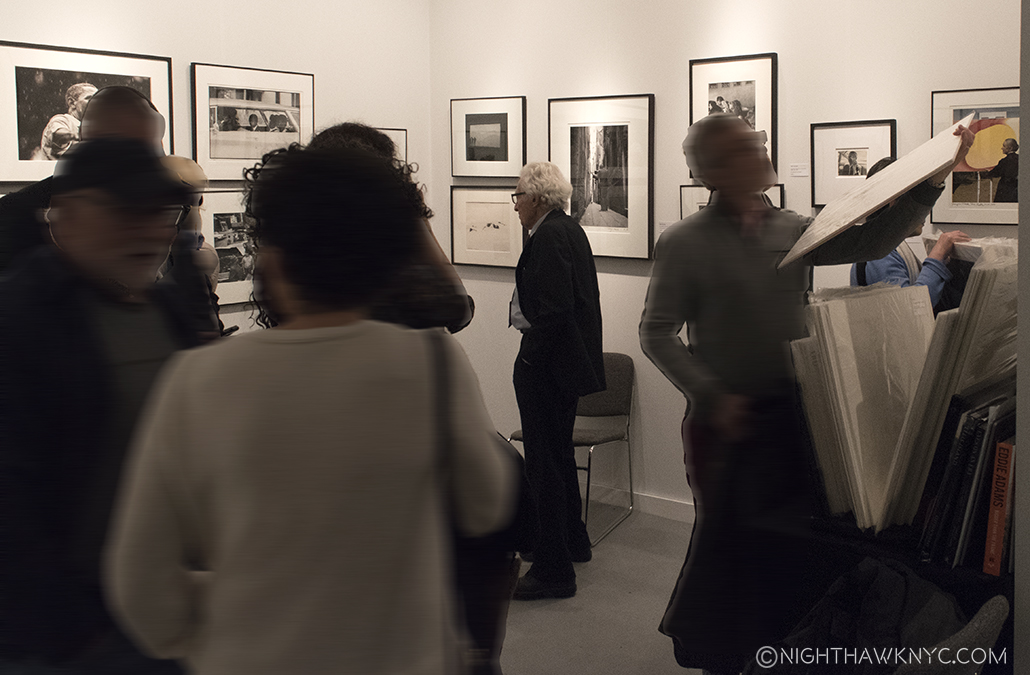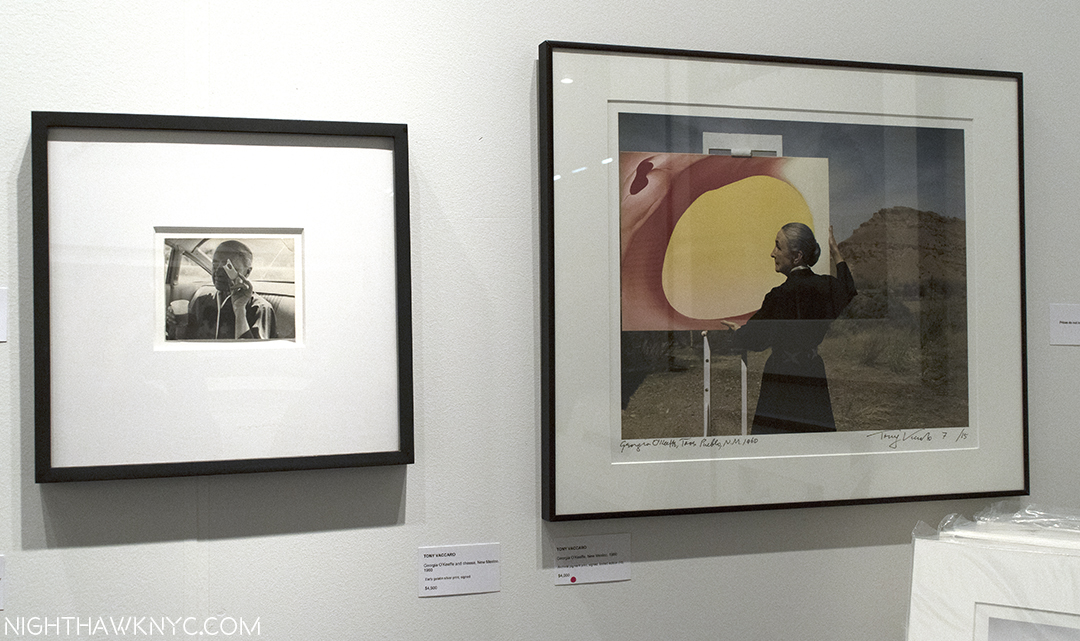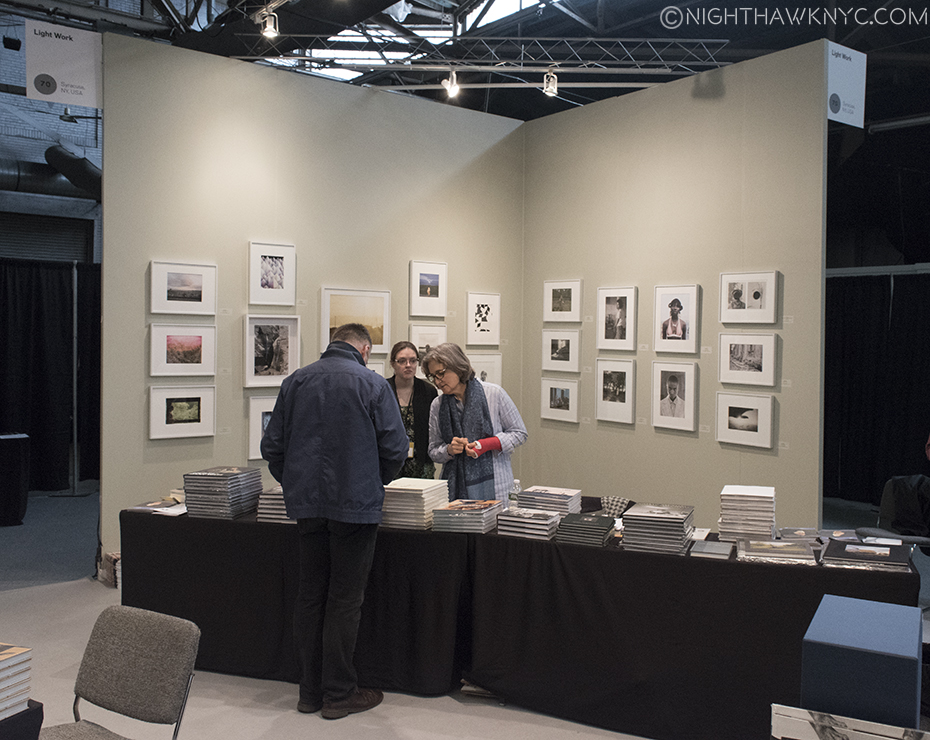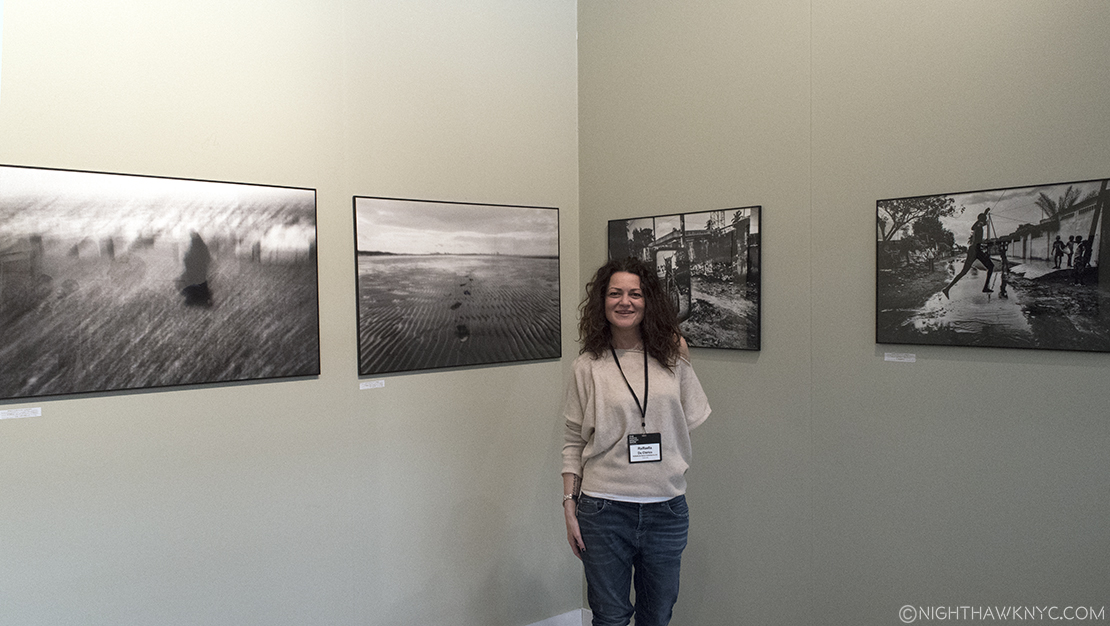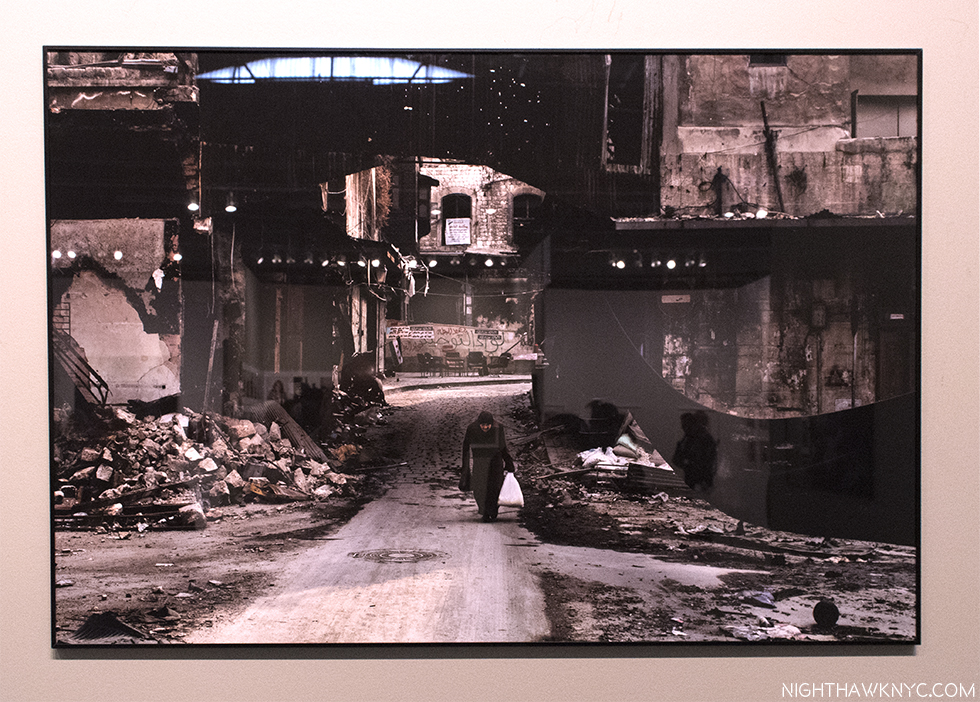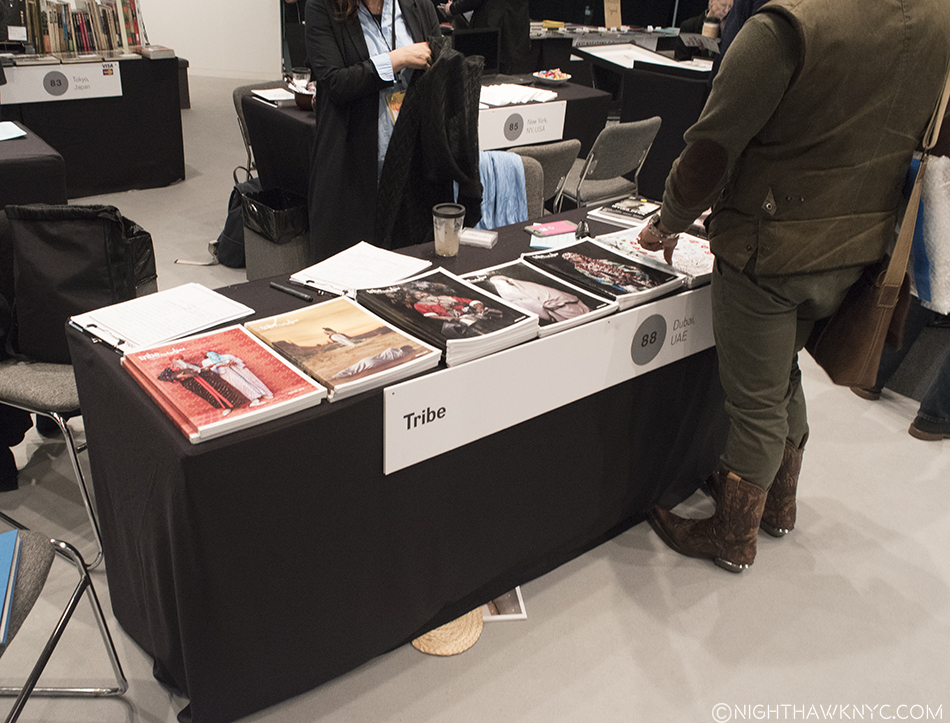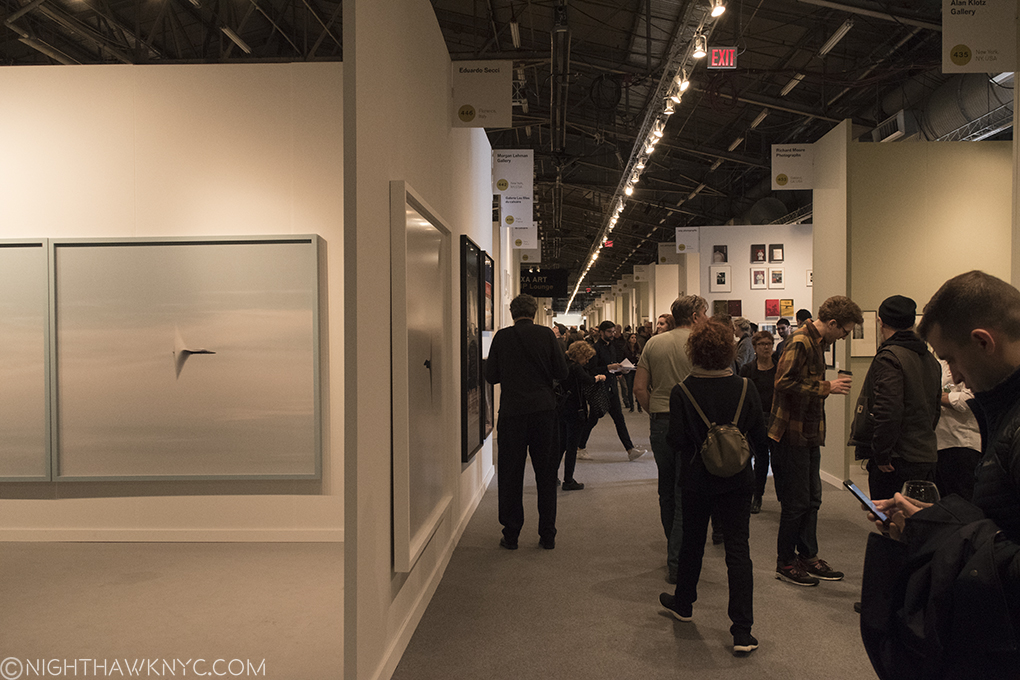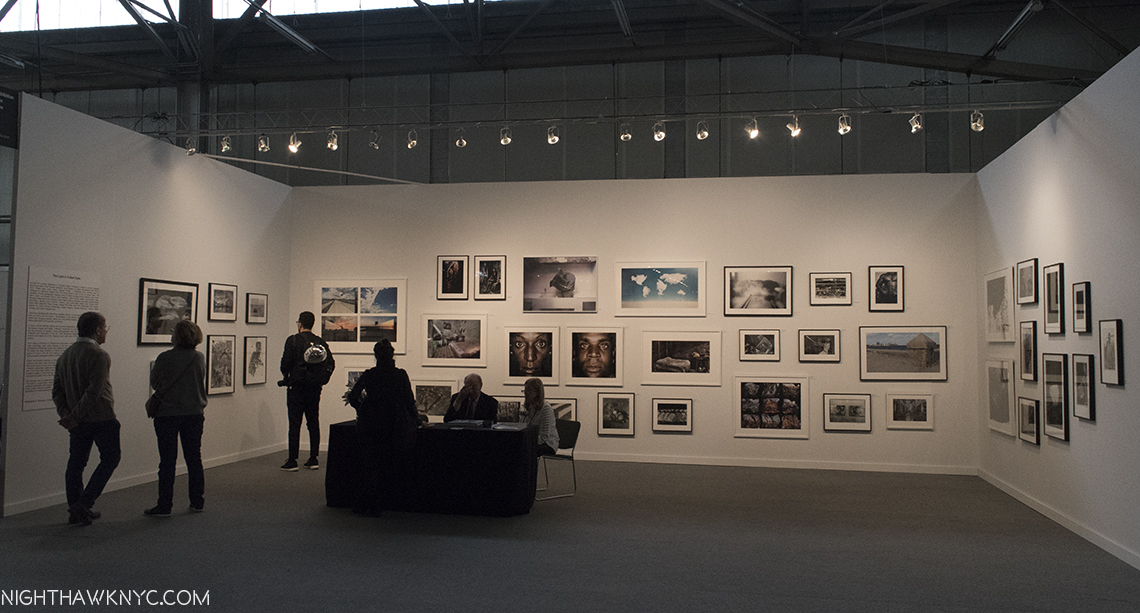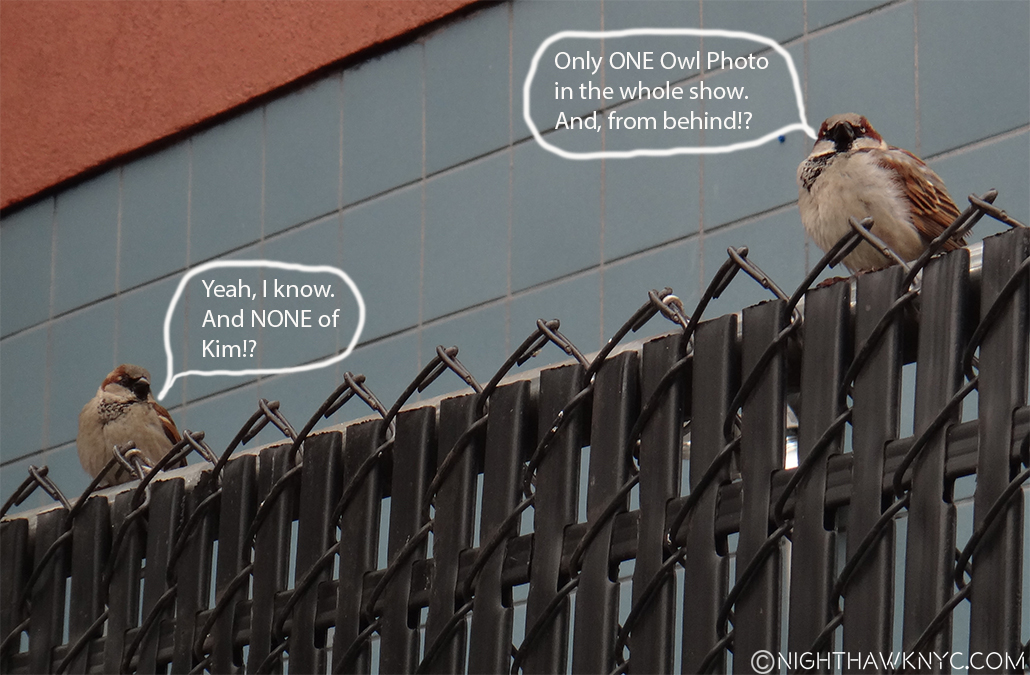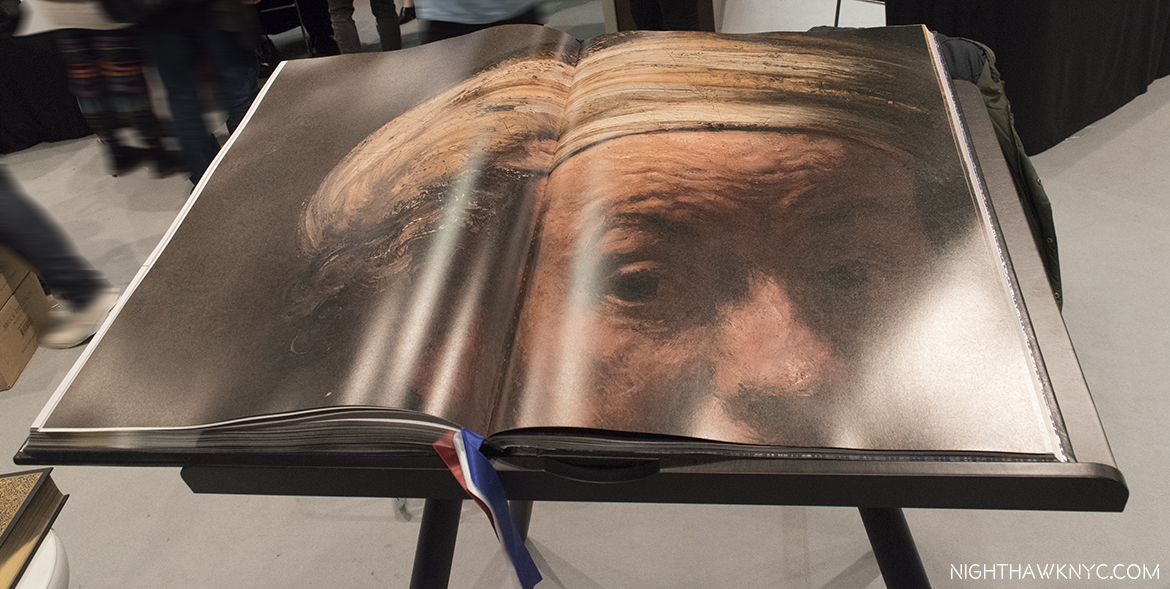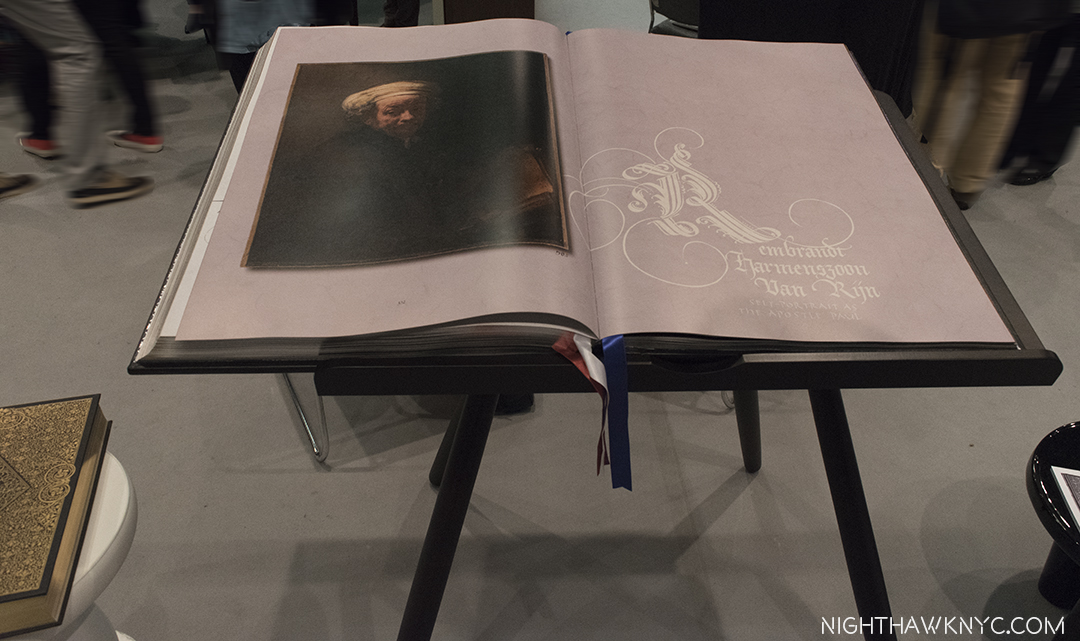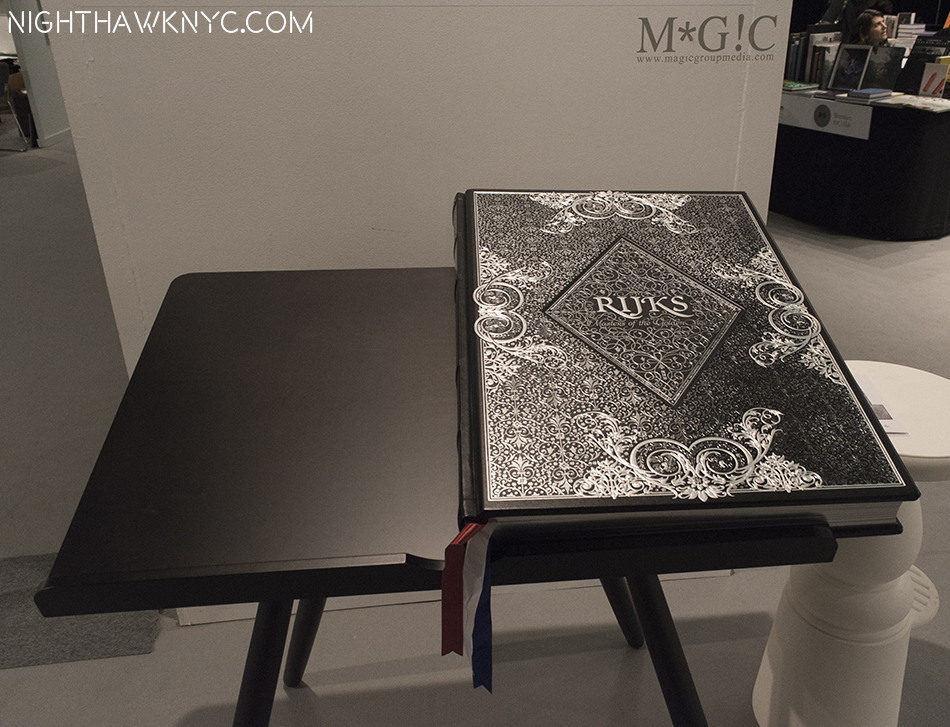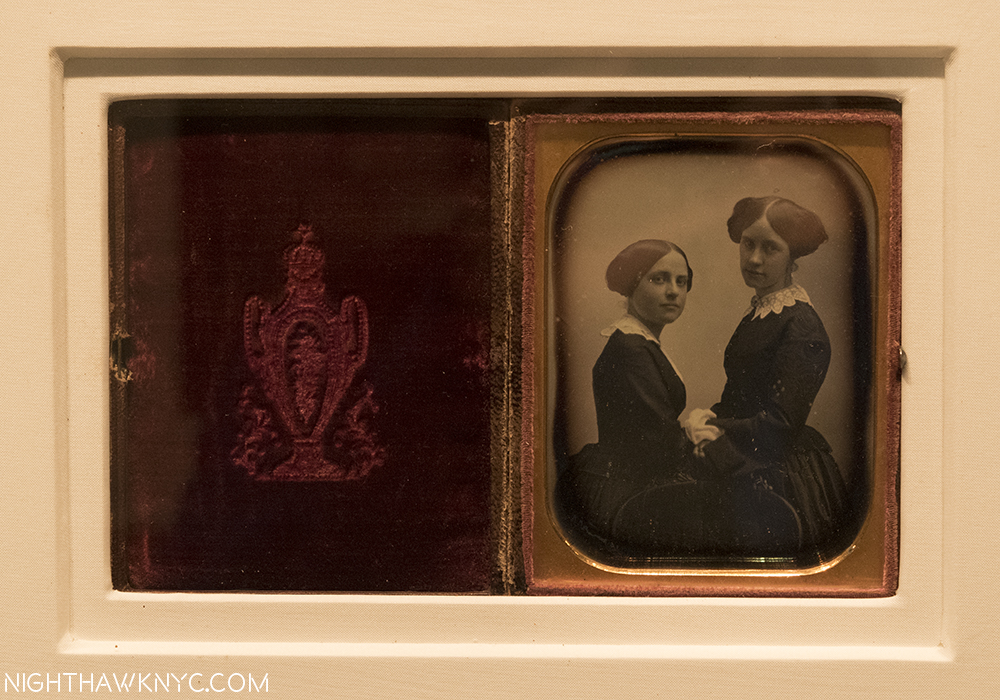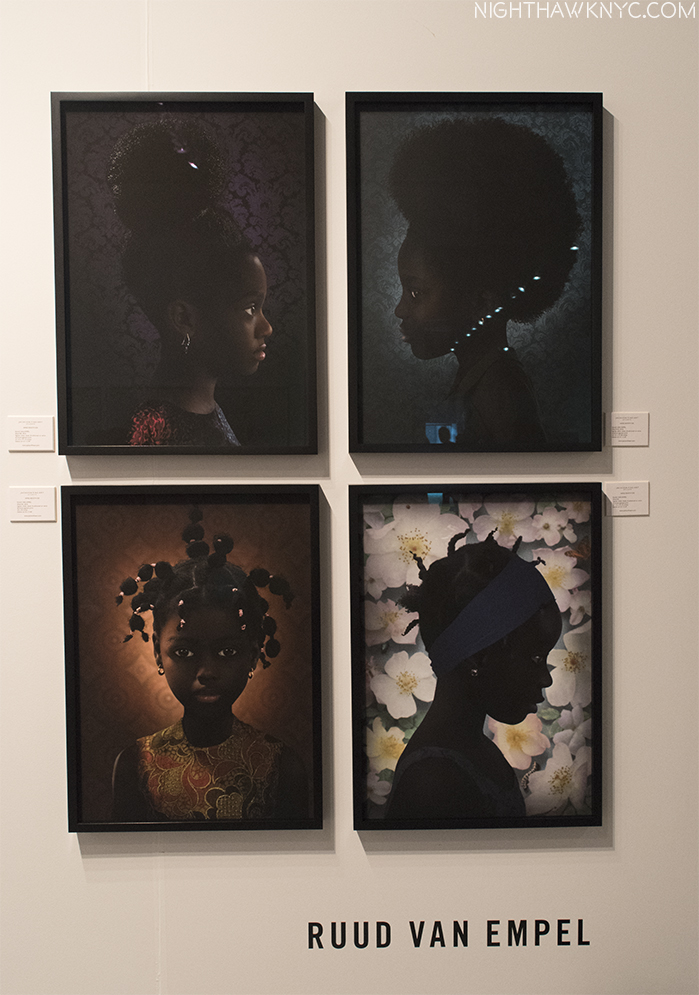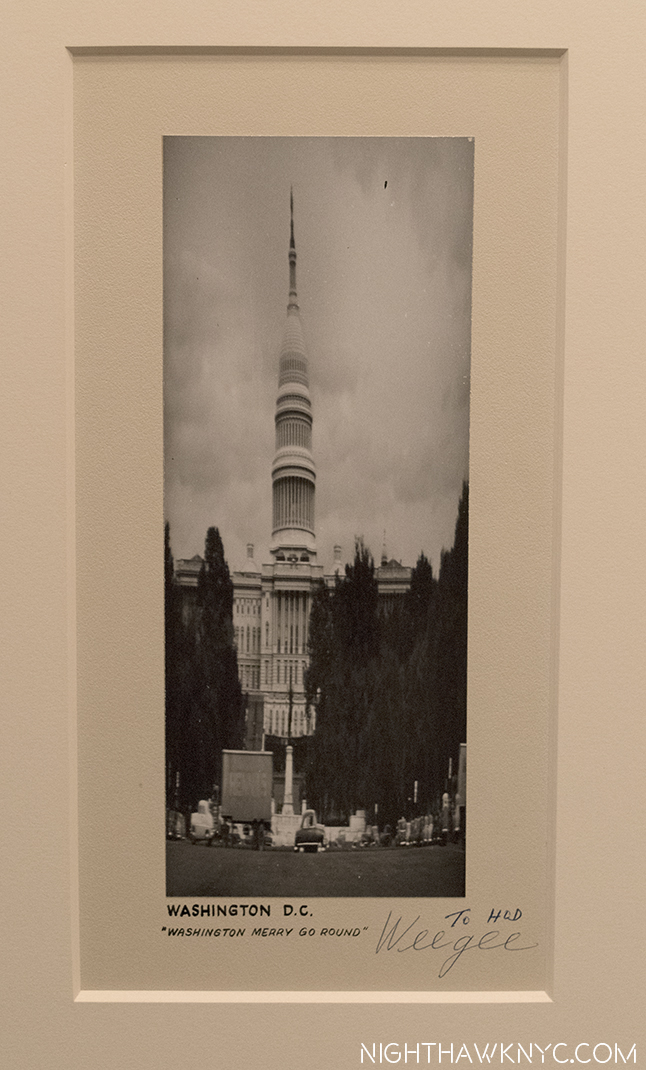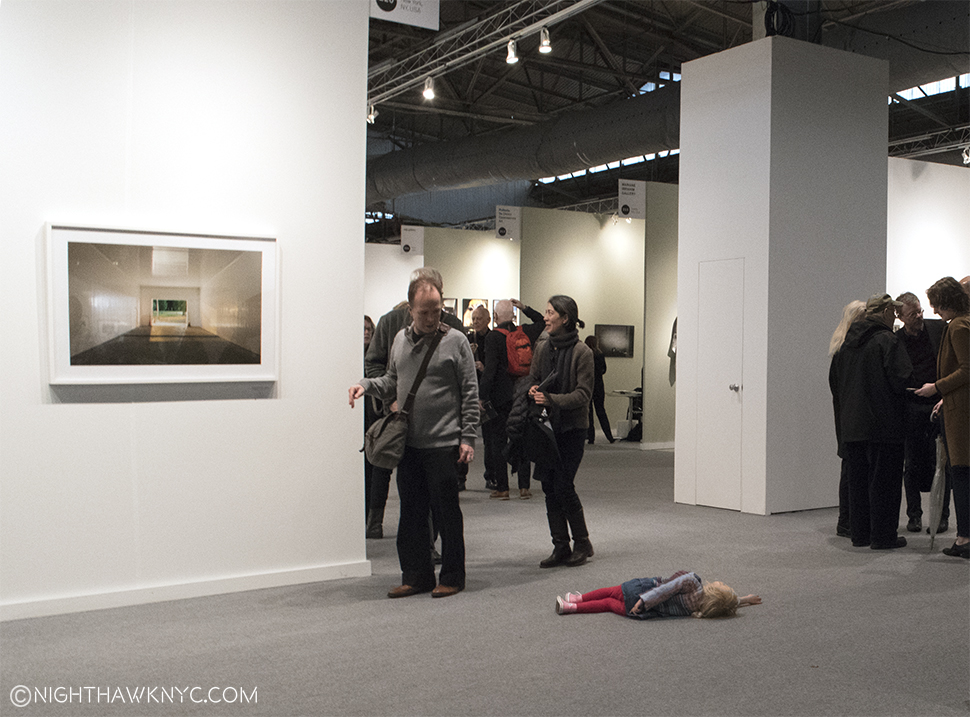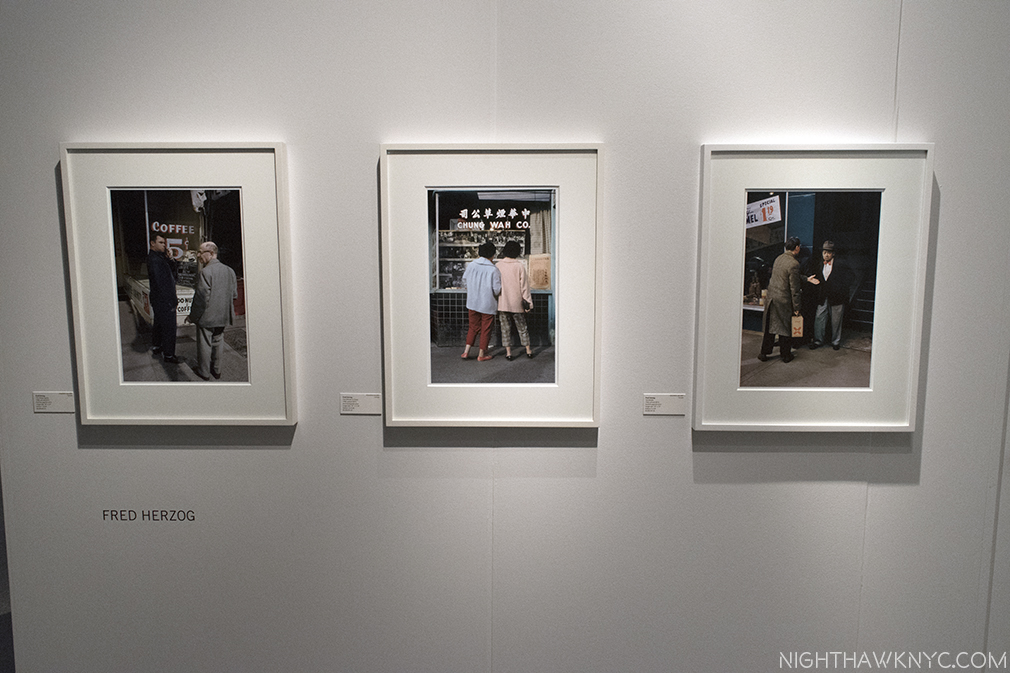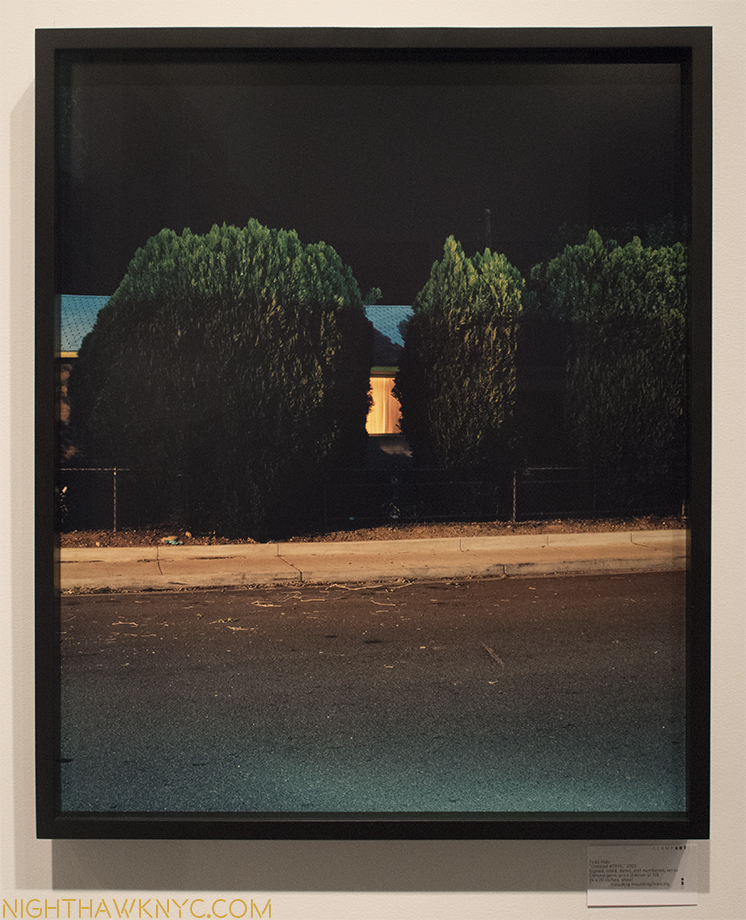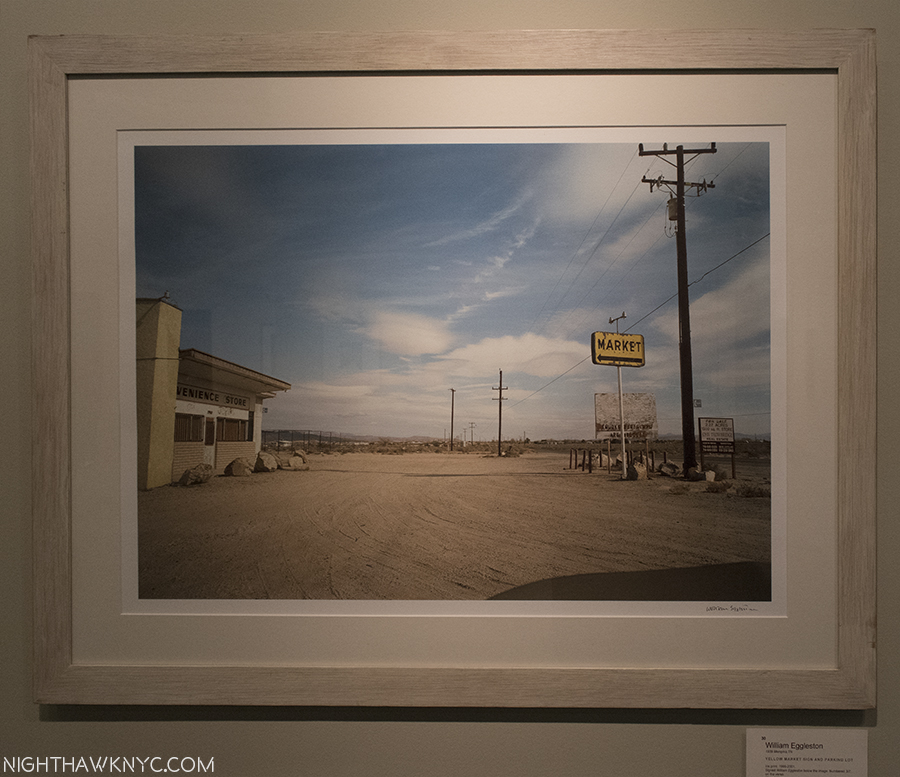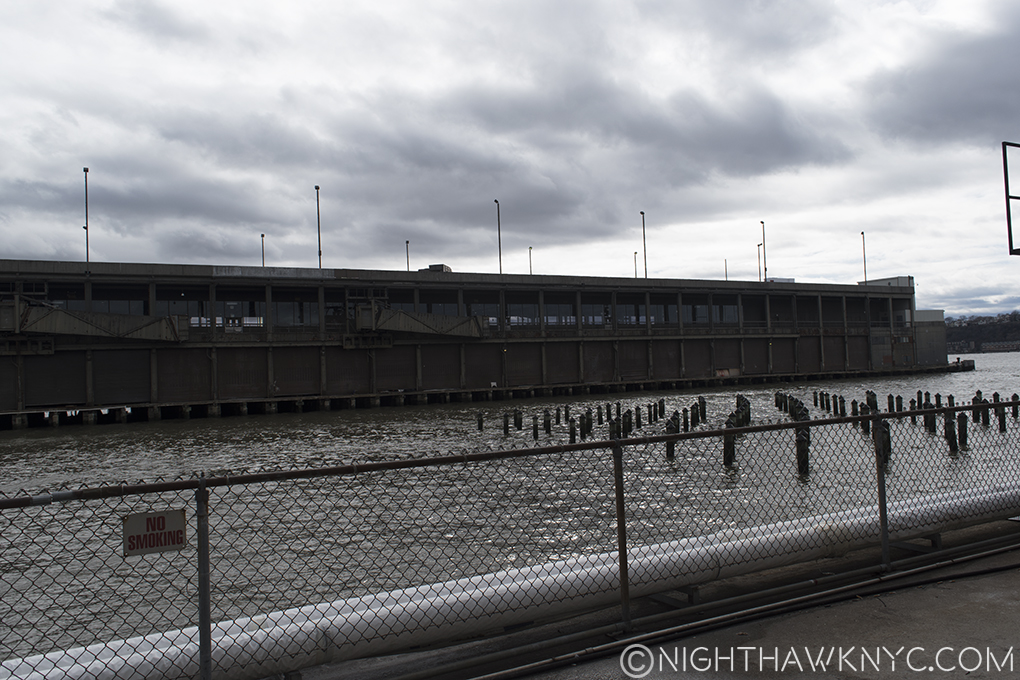Written & Photographed by Kenn Sava (*unless otherwise credited)
I love The Photography Show.

AIPAD, 2019, stretches as far as the eye can see- in all directions. There’s A LOT to see, and I’m here to see ALL of it. The view early Saturday afternoon, April 6, 2019. My thanks to DeShawn for his assistance with this shot. Click any picture for full size.
After all, the Association of International Photography Art Dealers, who present it, and I, have a core value in common- a passion for Fine Art Photography.
More commonly referred to as AIPAD (as I will henceforth), the show is the only chance all year in NYC for a large segment of the Fine Art Photography world here, or able to get here, to get together. That alone makes it a must attend event for anyone involved in Photography, for anyone interested in seeing the widest range of Fine Art Photographs presented in one place at one time in town all year long, and for anyone looking for something to hang on their wall that they will want to keep looking at indefinitely.
And? AIPAD is so B I G, there really is something for every taste hanging inside Pier 94.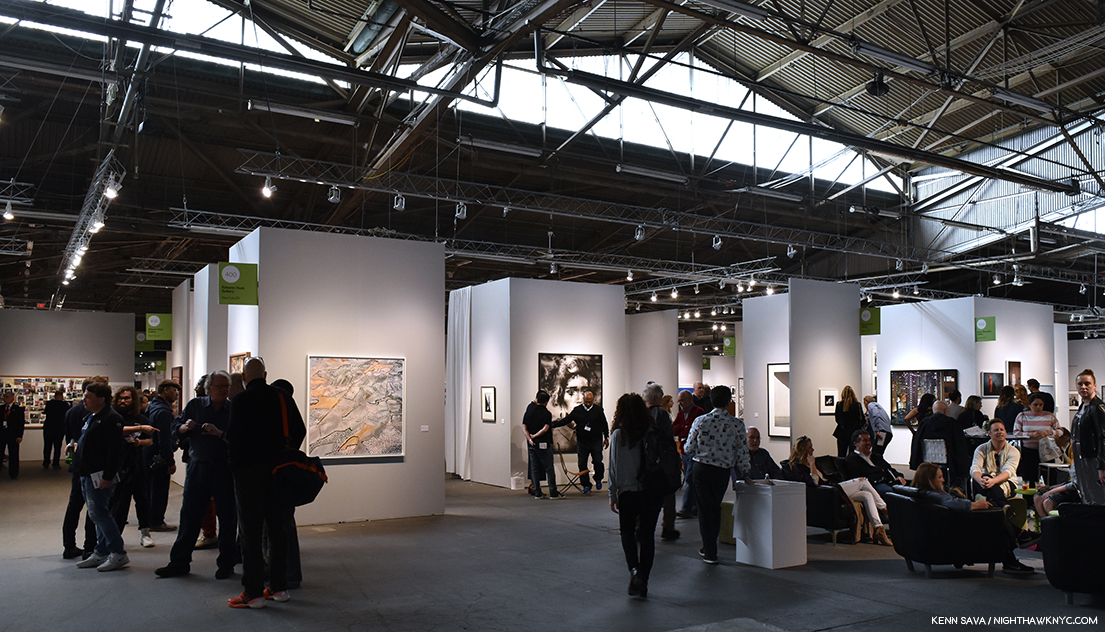
In 2019, the show was noticeably smaller, though, as you can see, it was still plenty large enough that it really required at least two visits to see all of it, and that’s not counting the AIPAD Talks (which included Dawoud Bey, Sarah Greenough, Stephen Shore, and Harry Benson, separately, this year), Aperture’s Photobook Showcase, and various book signings and Photographer booth visits, which were ongoing over the weekend. If you wanted to take in some or all of those, too, attendance for the full five day run was the only way. Taking my own advice, over my five long days of attendance, I believe I saw all of it, though I was so busy with the gallery and PhotoBook areas I missed all the talks this year, much to my chagrin.
For me, and I think for most other visitors, no matter how many Photographers you’re familiar with? You’re guaranteed to add a few new names to your list- and “new names” has nothing to do with their age.
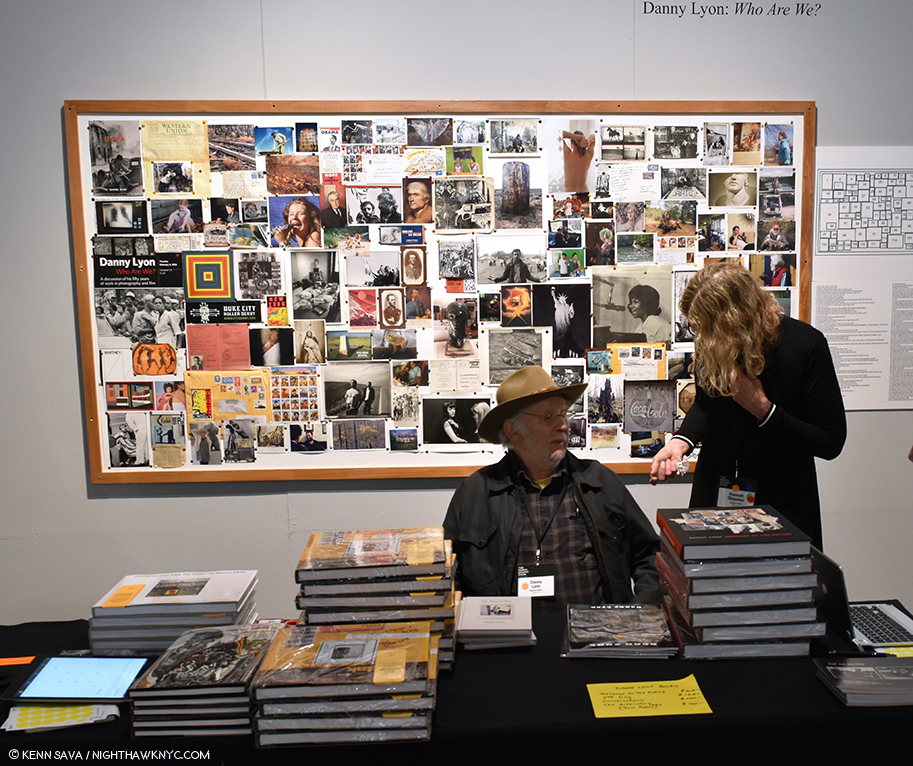
The legendary Danny Lyon, subject of a solo retrospective at The Whitney Museum in 2017, takes a break during his book signing on Saturday, April 6th at Etherton Gallery’s booth in front of a collage he created between 2016 and 2018.
Most of all? I love getting to see and meet Photographers. Maybe even get a book signed. After all? If it wasn’t for the Photographers? There’d be no show.
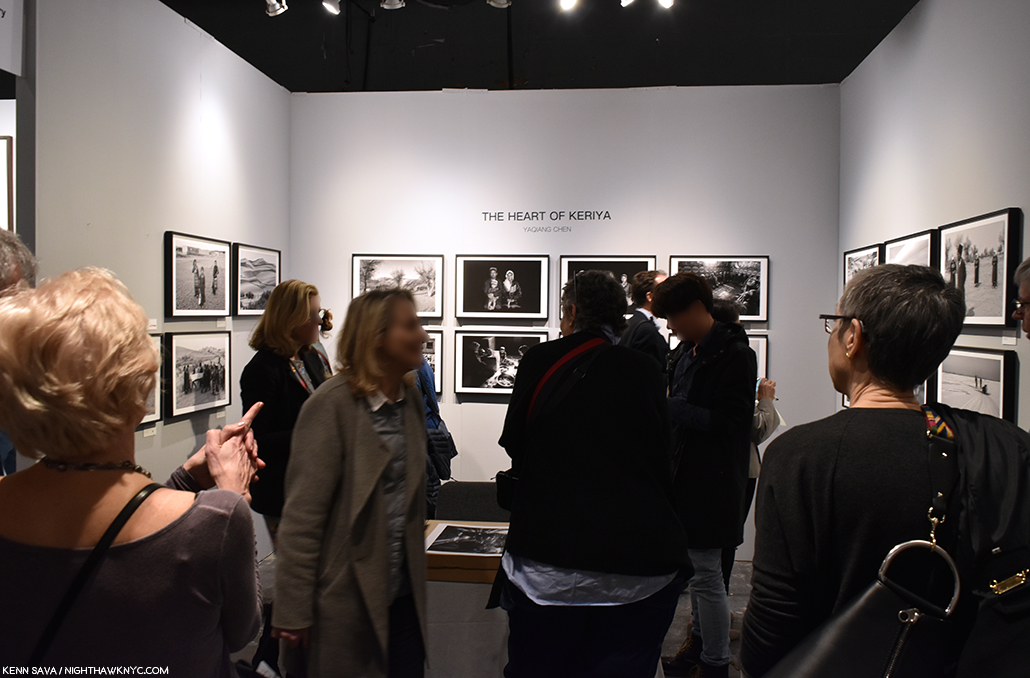
The closing day crowd at SoPhoto Gallery’s booth, who came all the way from Beijing, China, to show Yaqiang Chen.
In the gallery booths, the range and variety of work on view was the best thing about the show. As I was in 2017 and 2018, I was most impressed by the displays of Photographers not as well known in NYC, or in the USA for that matter, as they are elsewhere shown by galleries who traveled long distances to attend, like SoPhoto and PeterFetterman Galleries.
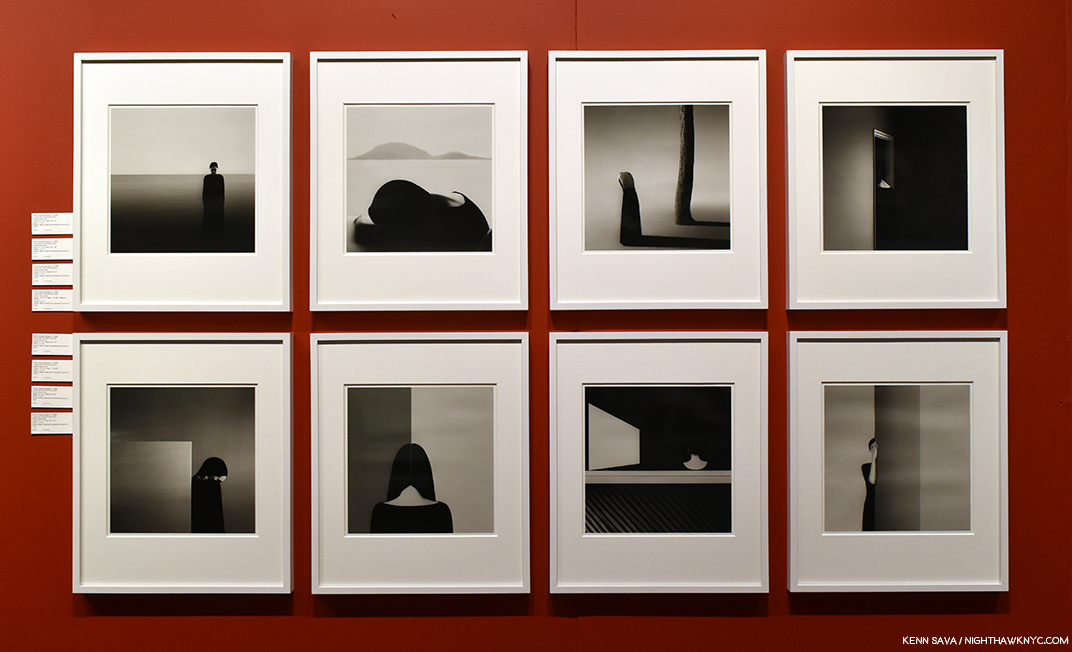
8 evocative Untitled works by Noell Oszvald, a Hungarian Photographer still in his 20’s, seen at Peter Fetterman Gallery, Santa Monica, CA.
Others paid homage to the host City with classic reminders of our Photographic past.
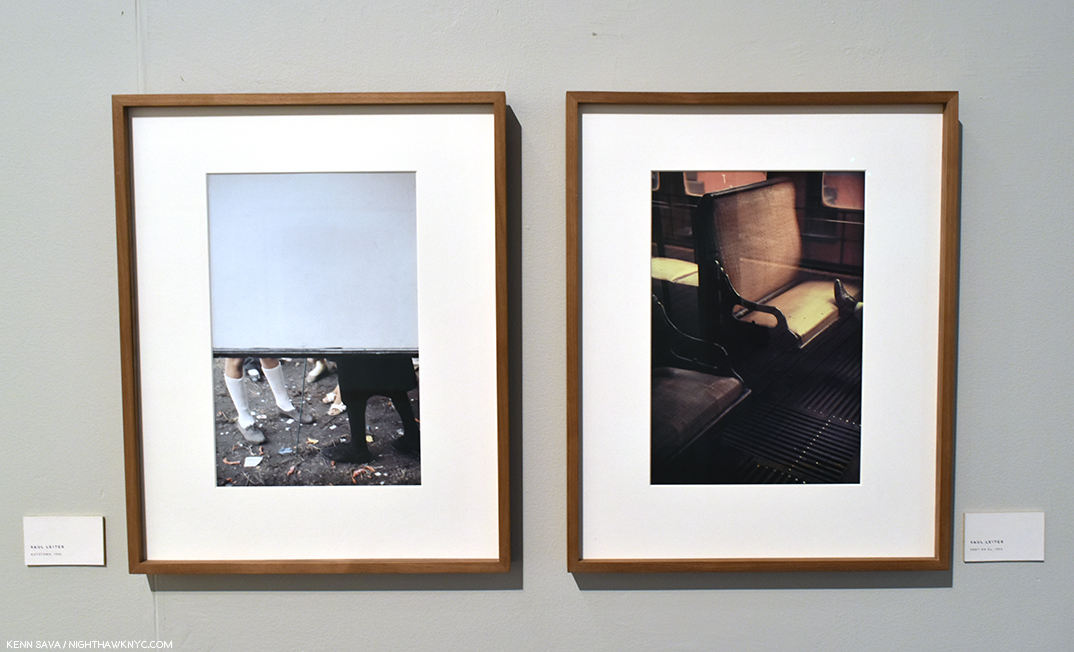
All the way from Munich, Germany, Galerie f5.6 brought beautiful and interesting work, as well as these two classic slices of vintage NYC from one of its favorite sons, Saul Leiter.
The NYC Galleries were also in the house, of course, and well represented by long standing big names like Laurence Miller Gallery-
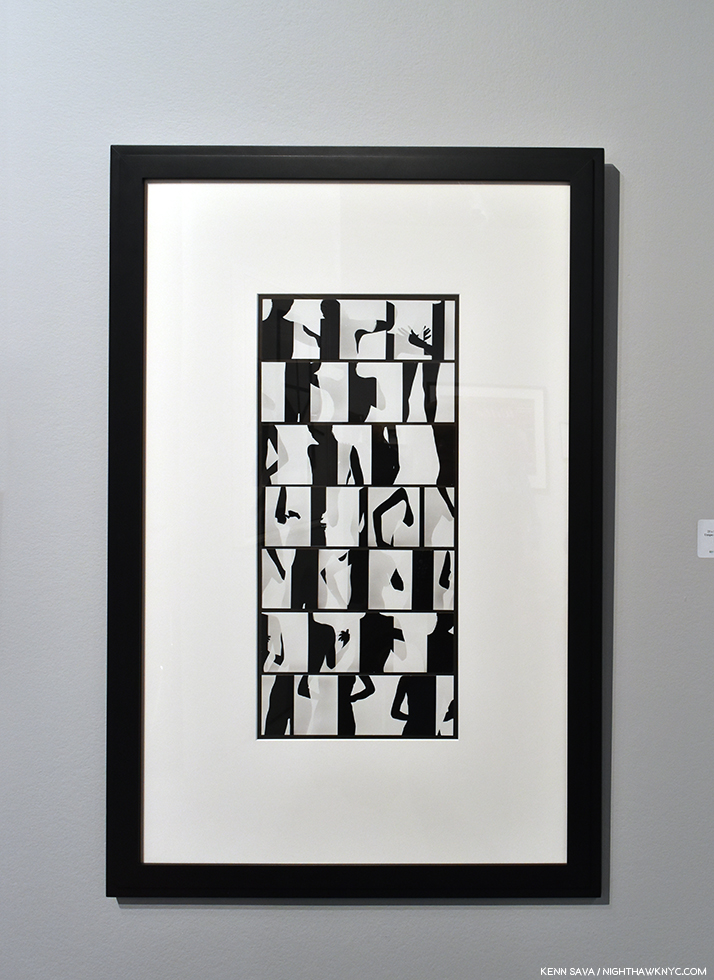
Ray K. Metzker’s extraordinary Nude, 1966-74, one of his legendary Composites highlighted his long time dealer, Laurence Miller Gallery’s, presentation.
Howard Greenberg Gallery-
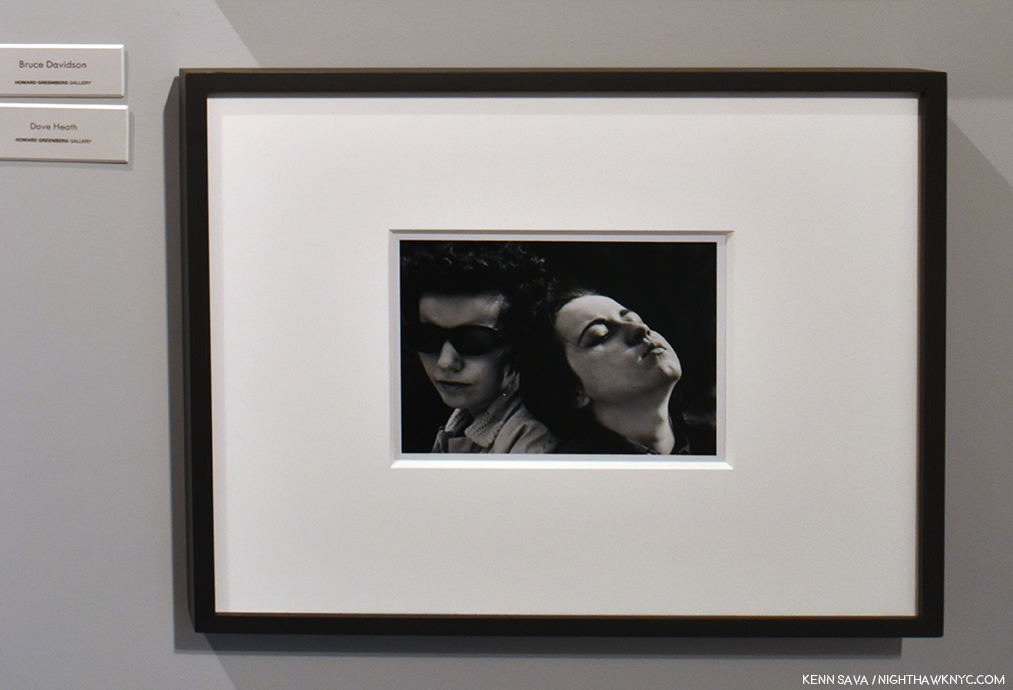
Dave Heath, a new discovery for me in 2019, who quickly became one of my favorites for his powerful, poingent portraits and his superb printing. Seen here at Howard Greenberg.
Edwynn Houk Gallery-
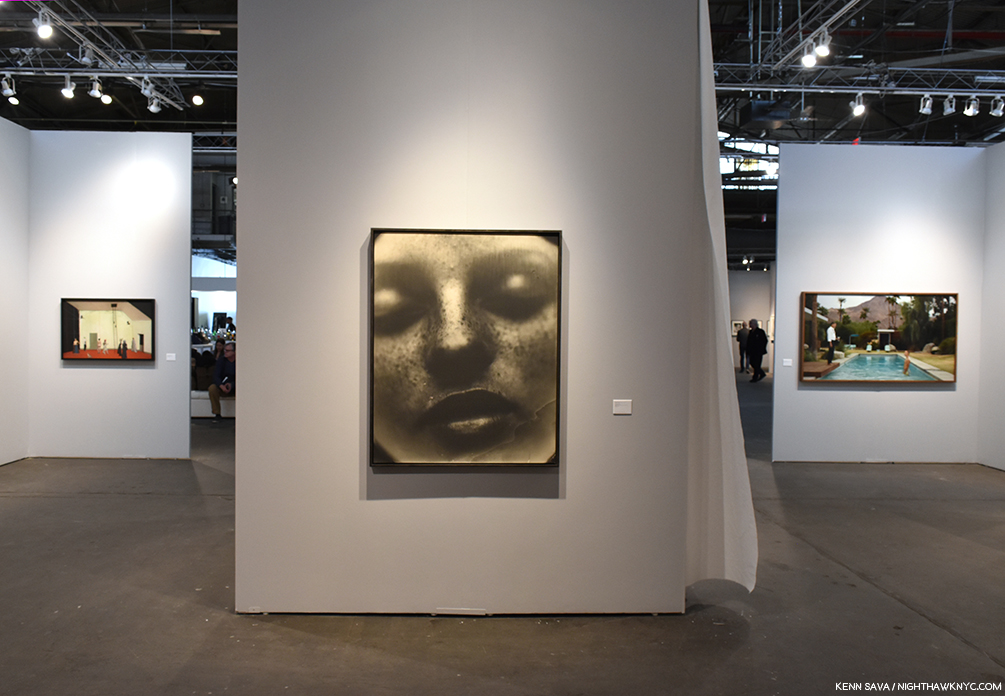
A gorgeous Sally Mann portrait, Virgina #42, 2004 flanked by The Trombone Player #6, 2018, by Paolo Ventura, left, and American Dream, Self-Portrait with Alex, 2018, by Erwin Olaf at NYC’s Edwynn Houk Gallery.
Yancey Richardson Gallery-
Bruce Silverstein-
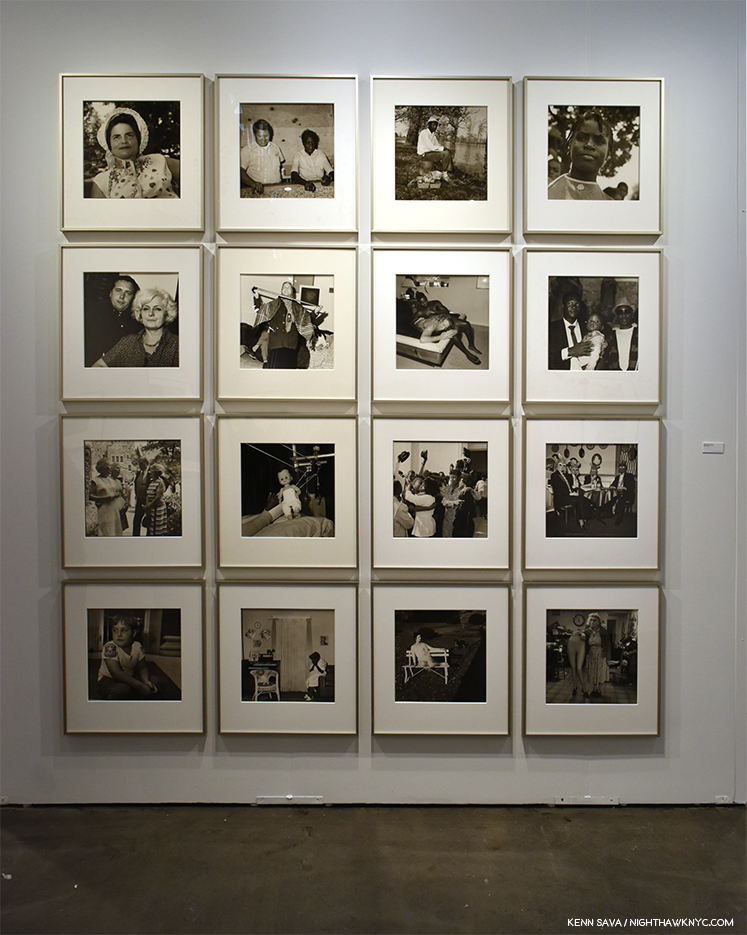
Rosalind Fox Solomon, Selected Photographs, 1975-2011, featuring a number of images from her recent MACK Book, Liberty Theater, which made my NoteWorthy PhotoBooks, 2018, list. Ms. Solomon and Dawoud Bey were announced as winners of the ICP 2019 Infinity Award in February. Seen at Bruce Silverstein.
and newer names, including Elizabeth Houston Gallery-
who displayed a fascinating group of pieces by the talented and versatile Nico Krijno.
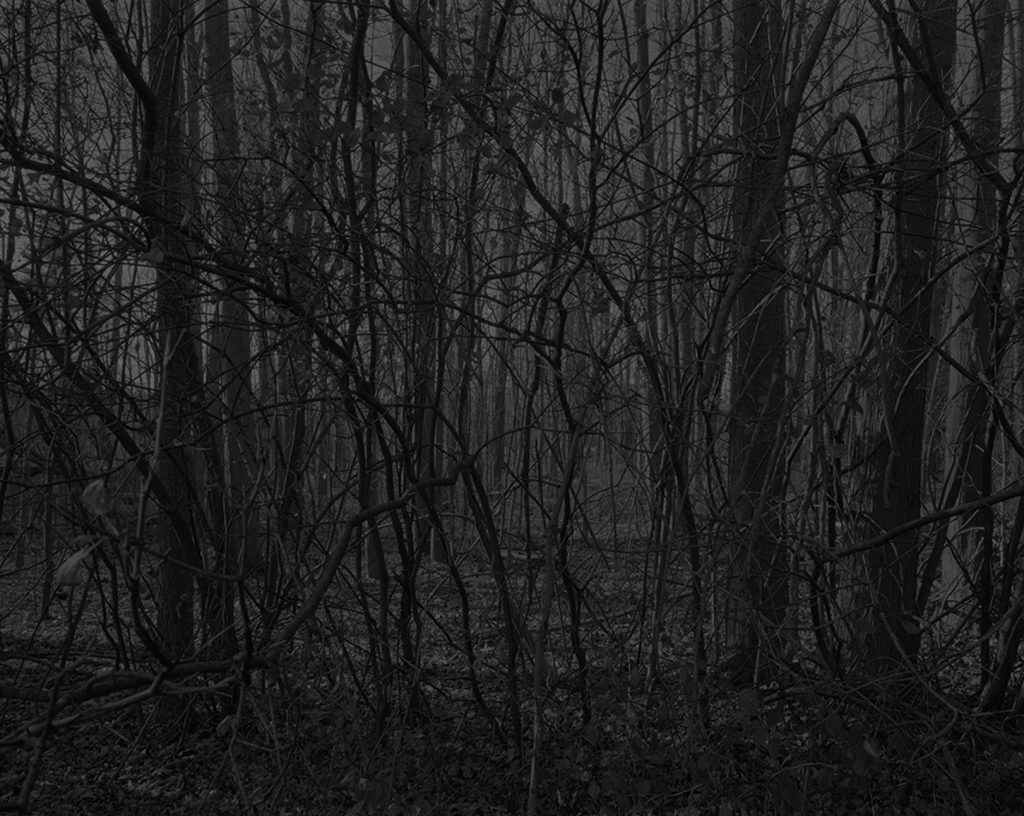
Dawoud Bey, Untitled #17 (Forest), from Night Coming Tenderly, Black, 2017, at, and *Photo courtesy of, Stephen Daiter Gallery
But, the consensus “hit” of the show, from all those I spoke with- Photographers, publishers, visitors and other gallerists, was undoubtedly the the work of Dawoud Bey shown by Stephen Daiter Gallery, Chicago. The group of new landscapes from his Night Coming Tenderly, Black, series based on an imagining of the flight of passage along the Underground Railroad, were singled out more than anything else on view by those I spoke with, and his group of four portraits dating from 1989-90 were almost as frequently mentioned. This continues the recent overdue attention given to this 40 year veteran Photographer’s work, along with the concurrent show at the Art Institute of Chicago of 25 works from Night Coming Tenderly, Black, and the February announcement of Mr. Bey as a recipient of the 2019 International Center of Photography Infinity Award.
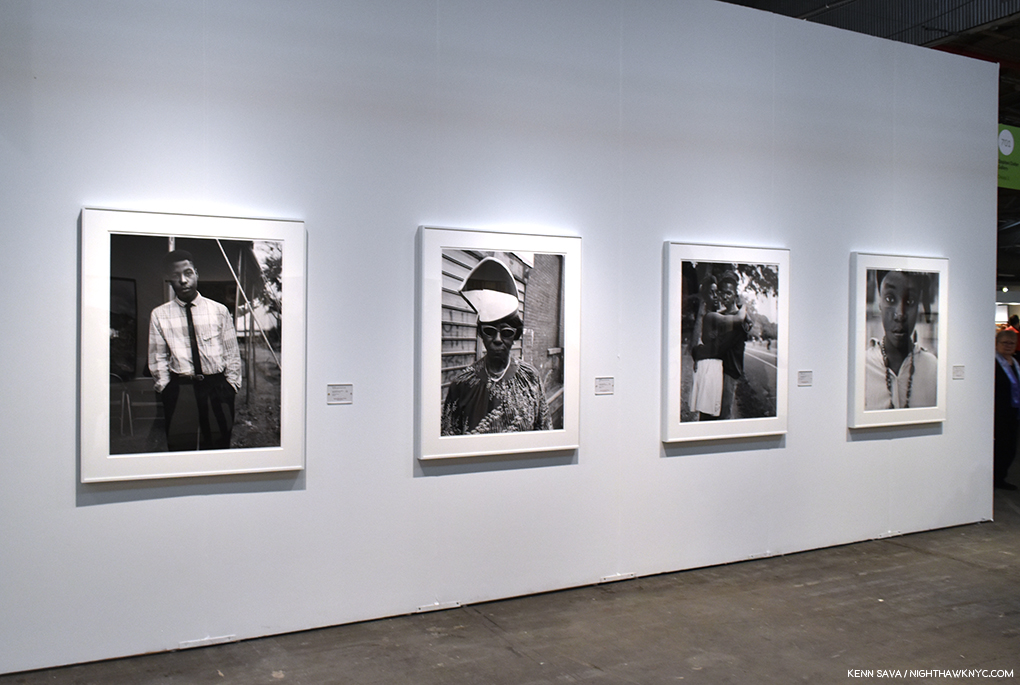
Portraits by Dawoud Bey, from left to right, Young Man at a Tent Revival, 1989, A Woman at Fulton Street and Washington Avenue, 1989, Couple in Prospect Park, 1990, and A Girl With A Kinfe Nosepin, 1990, at Stephen Daiter Gallery.
As mentioned earlier, Etherton Gallery devoted their main space to a mini-retrospective of the work of Danny Lyon, titled Danny Lyon: For the Record.
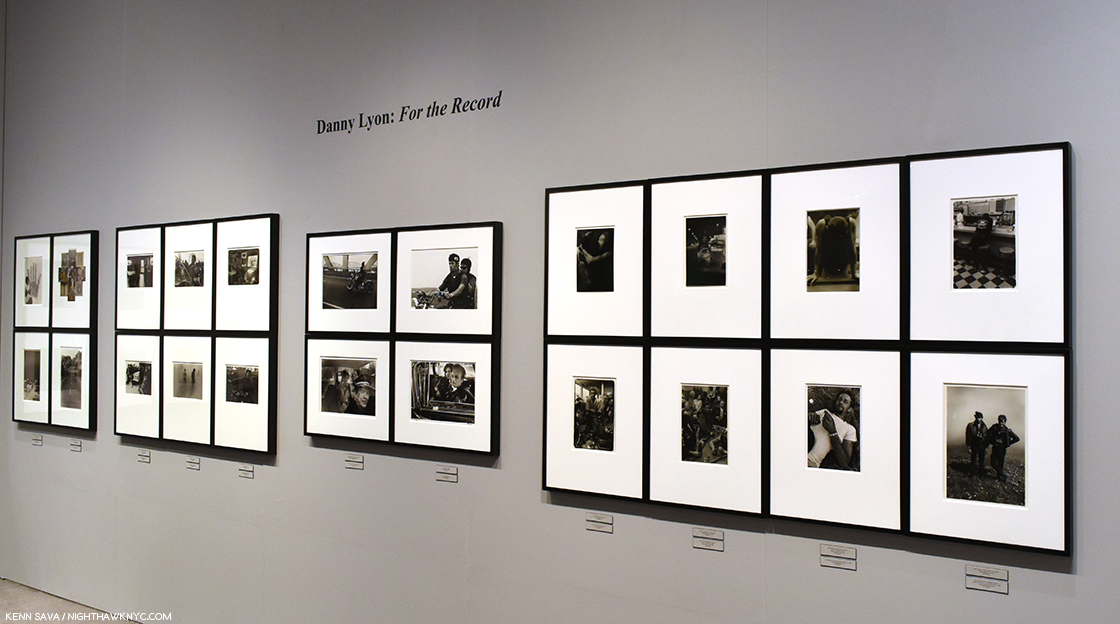
On view were works from all of his most well-known series, The Bikeriders and Conversations With the Dead, and The Destruction of Lower Manhattan.
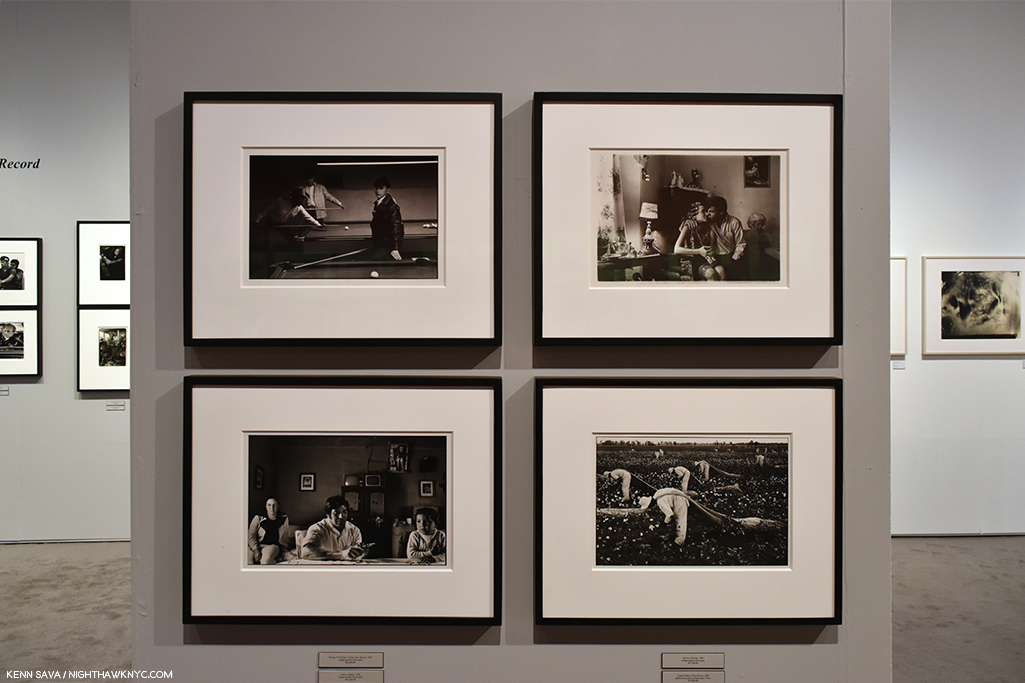
Along side others not as well-known
Monroe Gallery, returned to us from Sante Fe, New Mexico, showing the work of Tony Vaccaro, graced by the presence of the Dean of all Photographers once again, looking as spry as ever at NINETY-SEVEN! (Tony, WHAT’S your secret??)
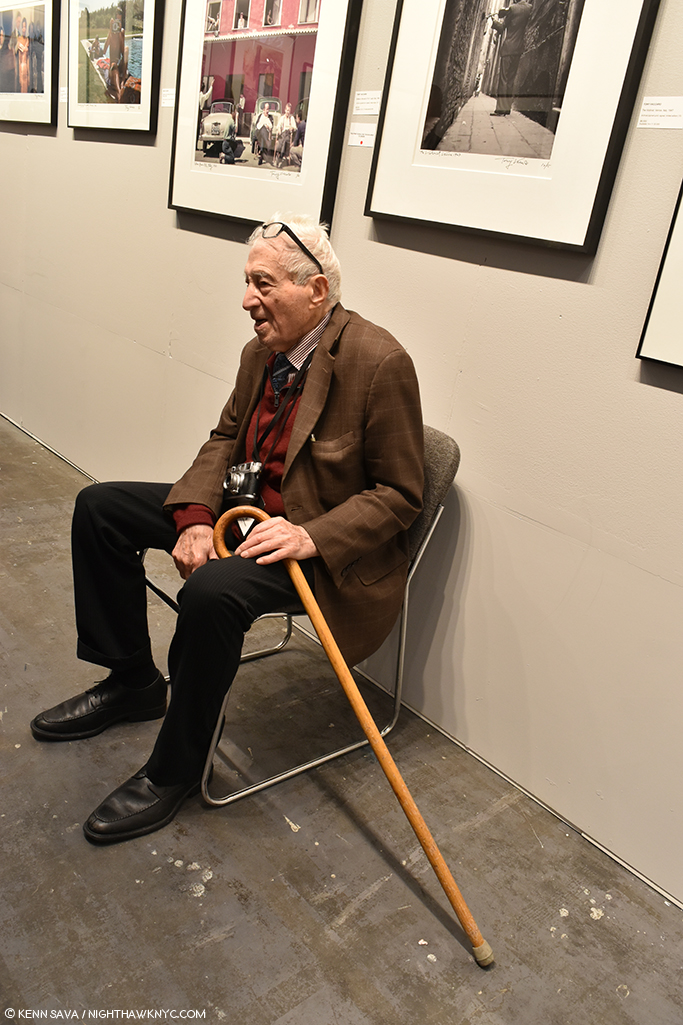
97 years young, Tony Vaccaro sits in front of a wall of his historic work at Monroe Gallery on April 6th. Off frame, to the left, he and I are surrounded by a crowd filling the space to see & hear the legend, who I had the honor of speaking with last year.
As joyful as it always is to see Mr. Vaccaro, the discovery for me at Monroe Gallery was the work of independent Photojournalist Ryan Vizzions.
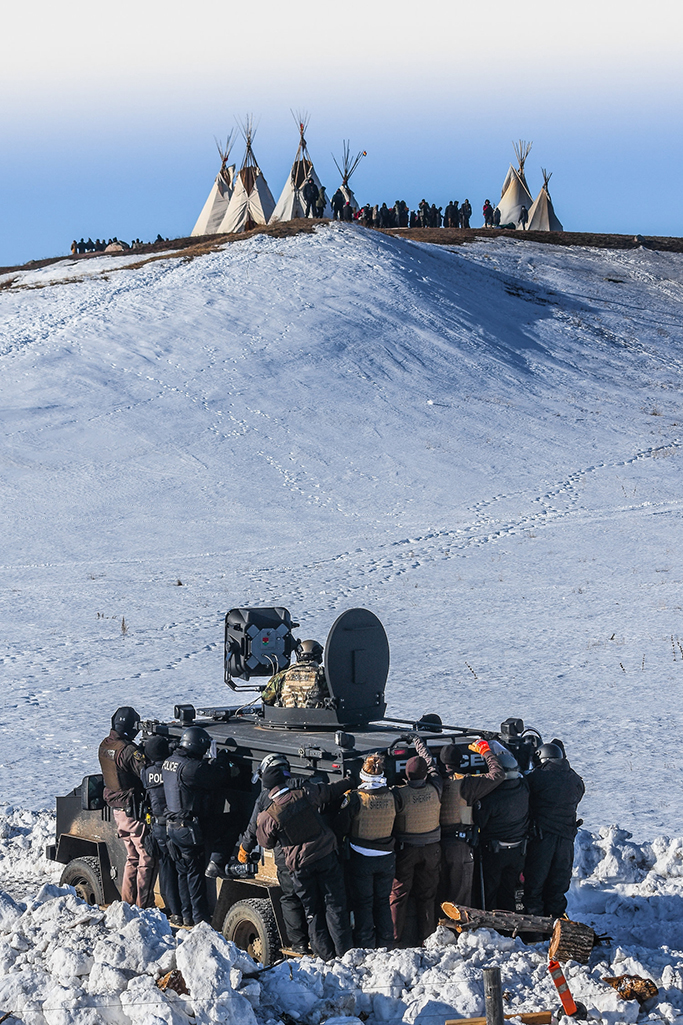
Ryan Vizzions, Protestors face off with police and the National Guard on February 1, 2017, near Cannon Ball, North Dakota, 2017. *Courtesy Ryan Vizzions.
I happened to walk into Monroe Gallery’s booth when Mr. Vizzions was there signing his brand new PhotoBook, No Spiritual Surrender: A Dedication to the Standing Rock Movement and discussing both the work on view and his background, both of which held me rapt. Shortly after his father’s passing, he quit his job and armed with a Nikon D3300, he headed west to document the Standing Rock Protests, one of the largest in American History, taking place at Standing Rock Reservation in North Dakota from April, 2016 to March, 2017. After an initial 3 week visit to Oceti Sakowin camp, he was so taken with what he found that he went home, sold everything and headed back. He stayed from late October through the winter and came away with an amazing body of work that, in my opinion, follows right in the footstep of the finest tradition of PhotoJournalism.
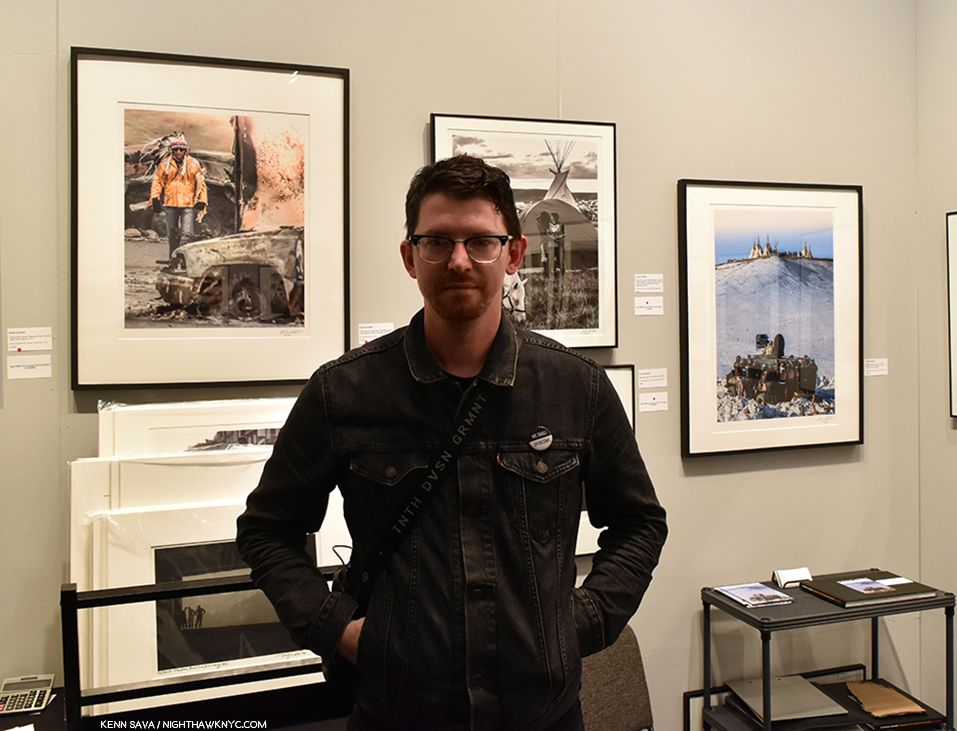
Ryan Vizzions poses in front of a selection of his powerful work at Monroe Gallery’s booth at AIPAD on April 6, 2019.
I subsequently found that I’m far from the only one taken by this young man’s work. Ryan has already won multiple “Photo of the Year” Awards- in 2016 from People, Artsy.net, and Mic.com. In 2017, from the Guardian and ABC News. He’s also had his life threatened. Now, he’s represented by Monroe Gallery. More on Ryan and his story, here. Ryan’s book, No Spiritual Surrender: A Dedication to the Standing Rock Movement is highly recommended.
Elsewhere around the show, here are some other highlights-
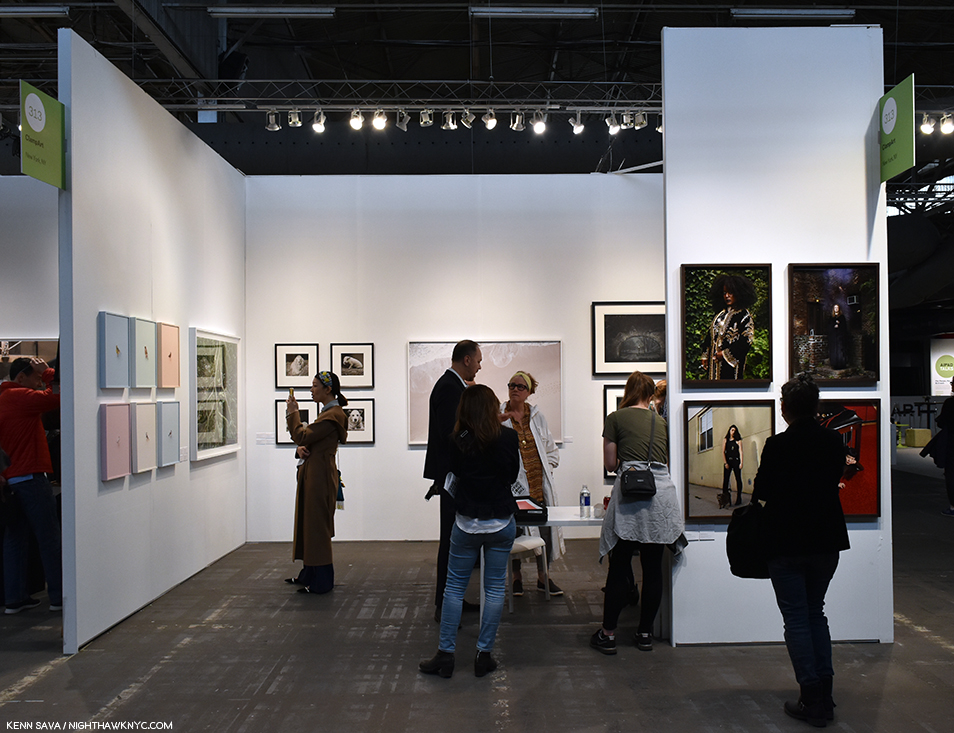
Brian Clamp, the tall gentleman, center, seen at his ClampArt booth, showing cutting edge work, as usual.
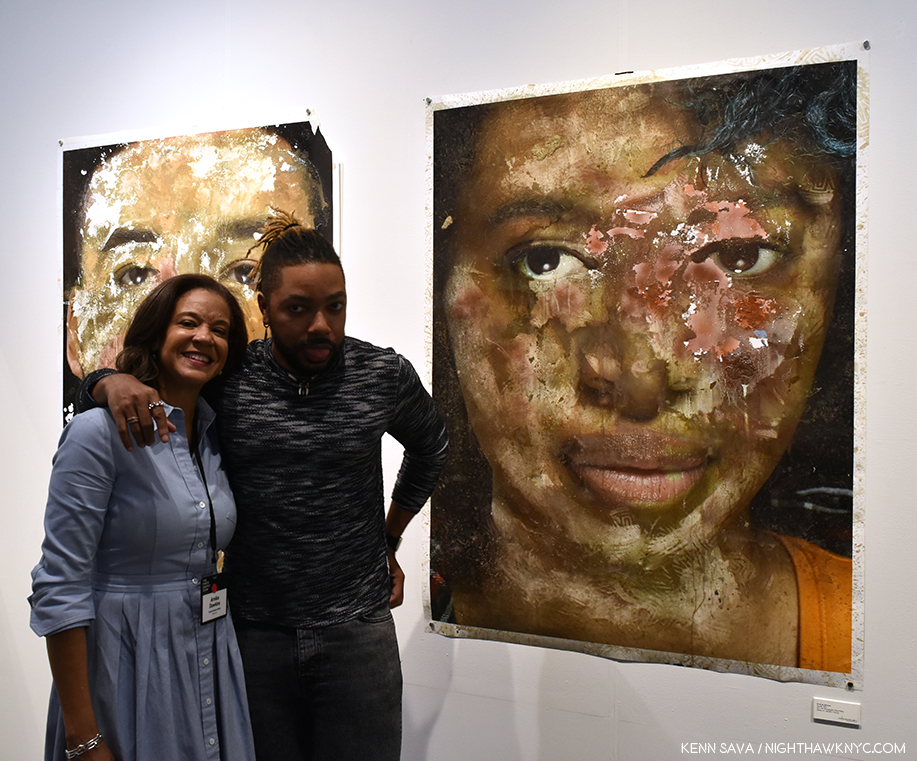
One of the leading Photography gallerists in the South, Atlanta’s Arnika Dawkins, left, of Arnika Dawkins Gallery Photographic Fine Art, presented one of her latest finds, Ervin A. Johnson’s mixed media portraits, and Jeanine Michna-Bales, who I featured in an AIPAD Discoveries piece last year.
A discussion of highlights has to include the exhibition curated by world renowned Magnum Photographer Alec Soth, fresh off the release of his newest book, I Know How Furiously Your Heart Is Beating, and the opening of his solo show of the same work at Sean Kelly Gallery.
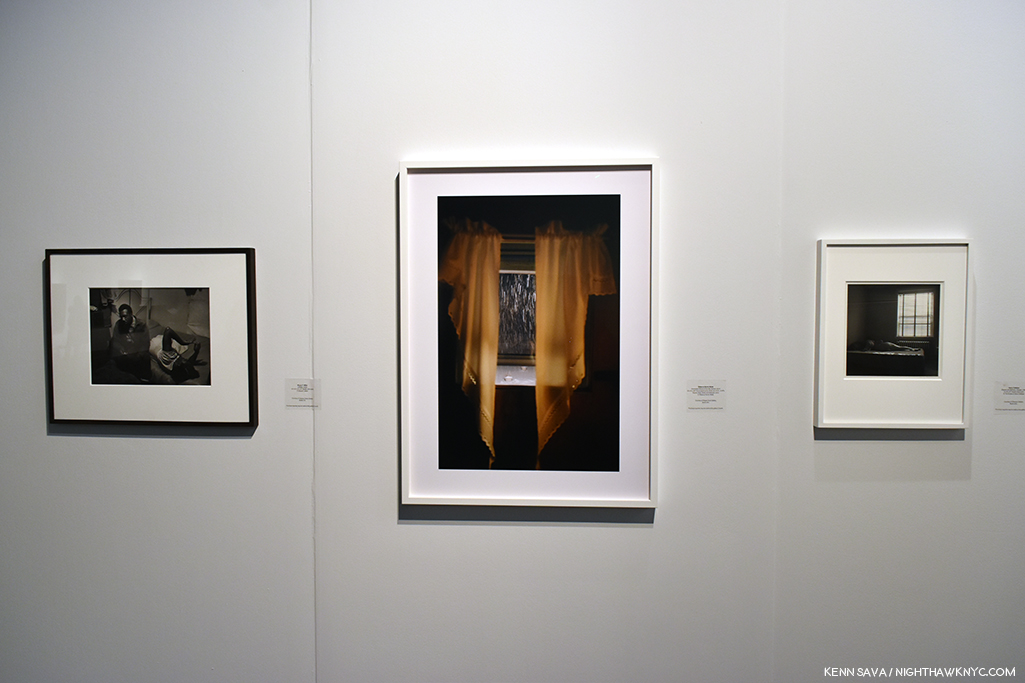
This section consists of Wayne F. Miller, Rebecca Norris Webb (who’s married to Alex Webb) and Harry Callahan, left to right.
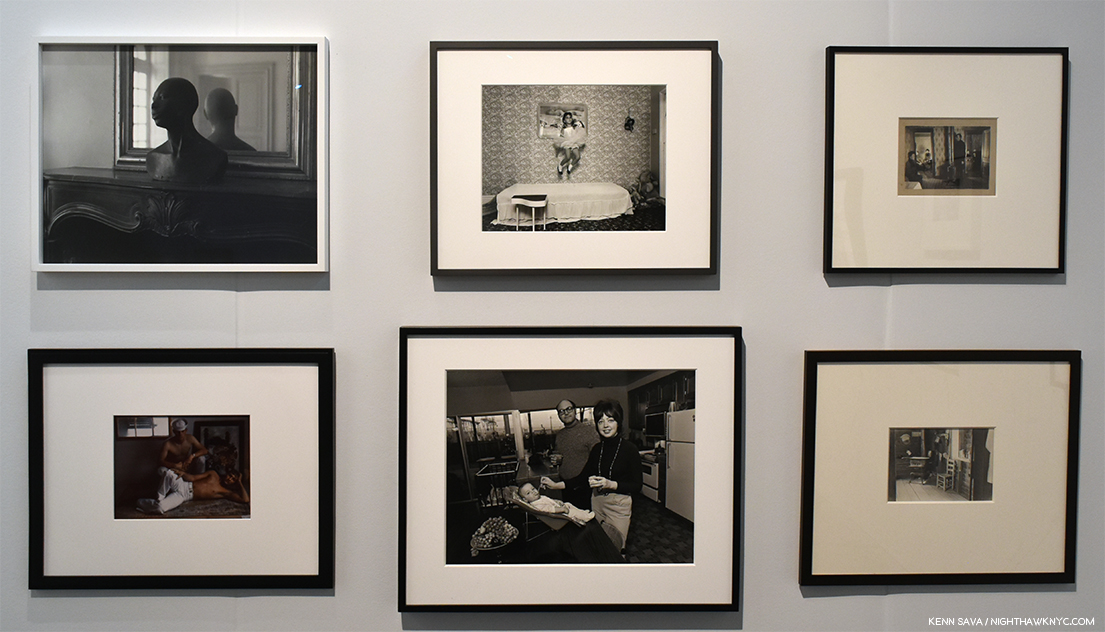
Mikael Levin, Onus, 2000, Sirkka Liisa Konttinen, Emma Dowds (Step by Step series), 1982, Unknown, Interior of an American Home, c.1900, Marie Cosindas, Sailors Key West, 1966, Bill Owens, We’re really happy, 1972, from Suburbia, Walker Evans Kitchen in Floyd Burrough’s Home, Hale County, Alabama, 1936
Mr. Soth selected a fascinating variety of Photographs around the theme, A Room for Solace: An Exhibition of Domestic Interiors. His selections from the galleries attending the show was continually fresh and surprising, made all the more fascinating in his carefully considered hanging. Couches and tables in the space added a “homey” touch, but most of all, I was excited to see a Photographer have a chance to select and lay out at least one section of AIPAD, and Alec Soth did a terrific job, in my opinion.
Observations-
I really can’t say that over the five days in the gallery section, I heard any complaints. The only issue seemed to be with the carpeting in the booths, which was lumpy in places throughout the show, and seemed to be a bit tricky for those wearing certain types of shoes. I witnessed one stumble that could have been disastrous (for the visitor and the Art), except for a quick extended hand keeping a stumble from being a fall. Outside of that, the only question I heard more than once, and I heard it each day, was where “Where can I get coffee?” (The only spot I found was in the very back, behind the publishers.) Those minor issues aside, I think it’s safe to say that AIPAD was a well-run machine this year and that any issues from prior years were addressed for this year’s edition (this, the opinion of some returning booth holders I spoke with, and some I pointed out in the past). The staff was friendly, cordial yet focused, and professional throughout, regardless of the role they had. Security was exceedingly well handled, from a visitor’s perspective, both entering and leaving the show. I didn’t encounter anyone who had an issue with a staff member throughout the run of the show.
Of course, the biggest issue remains Pier 94, itself. It’s in one of the least convenient areas of mid-town Manhattan, barely serviced by mass transit, which makes it hard to get to, or leave, particularly in any kind of inclemency. Here’s one esteemed visitor’s experience getting there this year. My feeling is this must cut down on attendance dramatically. Perhaps 33 to 50%? Of course that needs to be weighed versus the added cost and size limitations of a different location, something I have no doubt has been considered long and hard. When I asked a variety of those I encountered about the location, all agreed about its inconvenience, but none were willing to sacrifice the size for convenience. I agree with them.
In conclusion-
Any piece such as this can only hope to show only a sample of the many thousands of Photographs on display. The work on view was only a portion of what the galleries actually brought to the show- a good number brought a fair amount of stock with them that wasn’t actually hanging on the walls as well. As I walked through the galleries each day, it seemed to me the attendance was steady and the galleries were busy. From the telling “red dots” I saw on name cards, and from the wrapped pieces I saw being carried out, my sense was that business was as good as it was last year. Prices seemed to have edged up, particularly for the “big names” in Modern & Contemporary Photography, but there was plenty of work I saw by Photographers who are well known today that were to be had at quite affordable prices, (and almost all of it was in signed & numbered editions this year, after seeing a number of open editions in prior years).
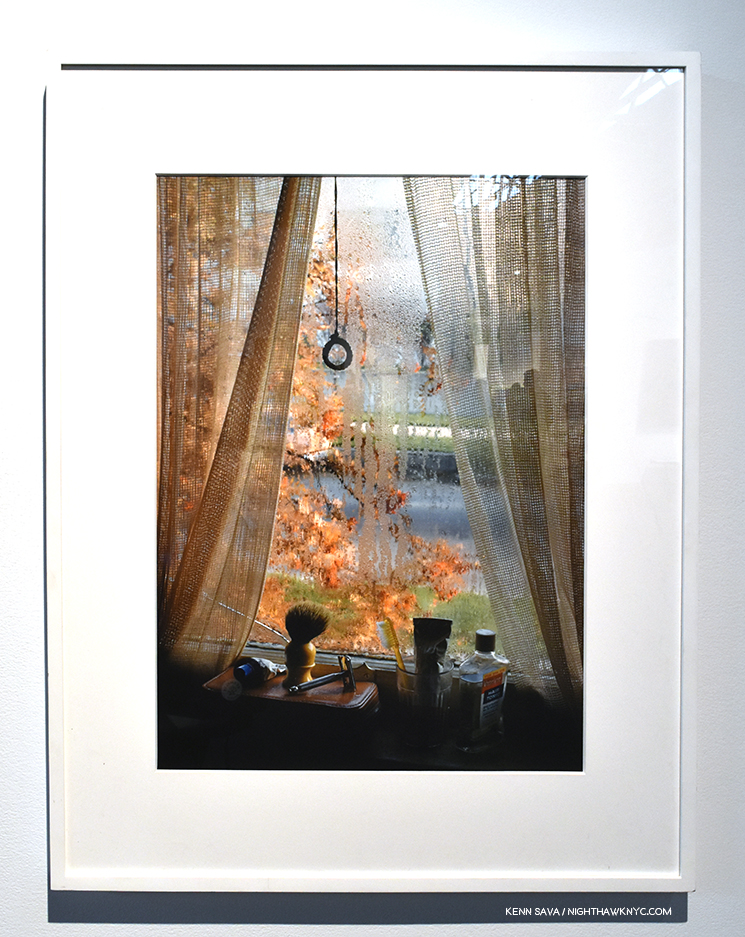
Alec Soth chose to end his show with Fred Herzog’s My Room, Harwood Street, 1958, a work that has special resonance for me. After seeing the display of his work at Equinox Gallery’s booth, I bought my Fred Herzog at AIPAD in 2017.
Considering the length of the history of Photography, the increasing international exposure for Photographers from all over the world by galleries, PhotoBooks, and the internet, the range and the quantity of Fine Art Photographs available for sale has never been greater. The Photography Show was a terrific opportunity to see a good deal of it in one place, to learn more about Photographers you’re interested in and discover new ones, to see how the work of different Photographers looks hanging side by side, to compare prices, and to walk away with something new to hang on your walls.
And I have.
For the third year in a row, I’m pleased to present extensive coverage of The Photography Show presented by AIPAD. As I did in 2017 and 2018, this will include a portfolio of pieces, each focused on a segment of the show. The next part looks at the PhotoBook Publishers, Book Dealers and Organizations area. Two subsequent pieces consist of an “AIPAD Focus” close up look at a leading light in Photography, and at least one (and I am hoping two) AIPAD Discovery piece(s), reprising a popular feature I inaugurated last year, that will focus on a particularly NoteWorthy Photographer previously not known to me. Hopefully, two. Stay tuned!
*- Soundtrack for this Post is “Take Me To The River” by Al Green.
My thanks to Margery Newman.
NighthawkNYC.com has been entirely self-funded and ad-free for over 6 years, during which over 250 full length pieces have been published. If you’ve found it worthwhile, you can donate to keep it going & ad-free below. Thank you!
Written & photographed by Kenn Sava for nighthawknyc.com unless otherwise credited.
To send comments, thoughts, feedback or propositions click here.
Click the white box on the upper right for the archives or to search them.
For “short takes” and additional pictures, follow @nighthawk_nyc on Instagram.
Subscribe to be notified of new Posts below. Your information will be used for no other purpose.

